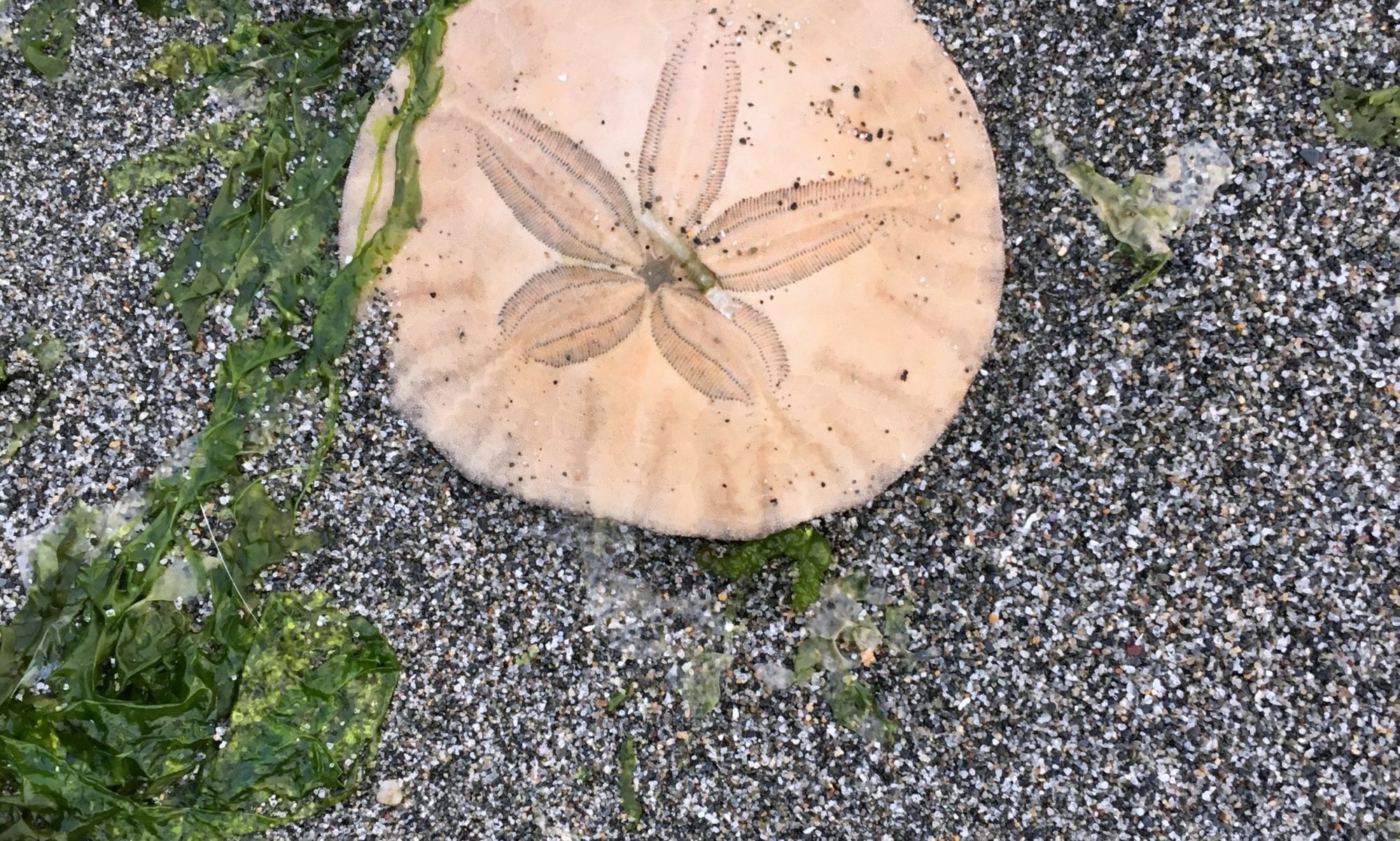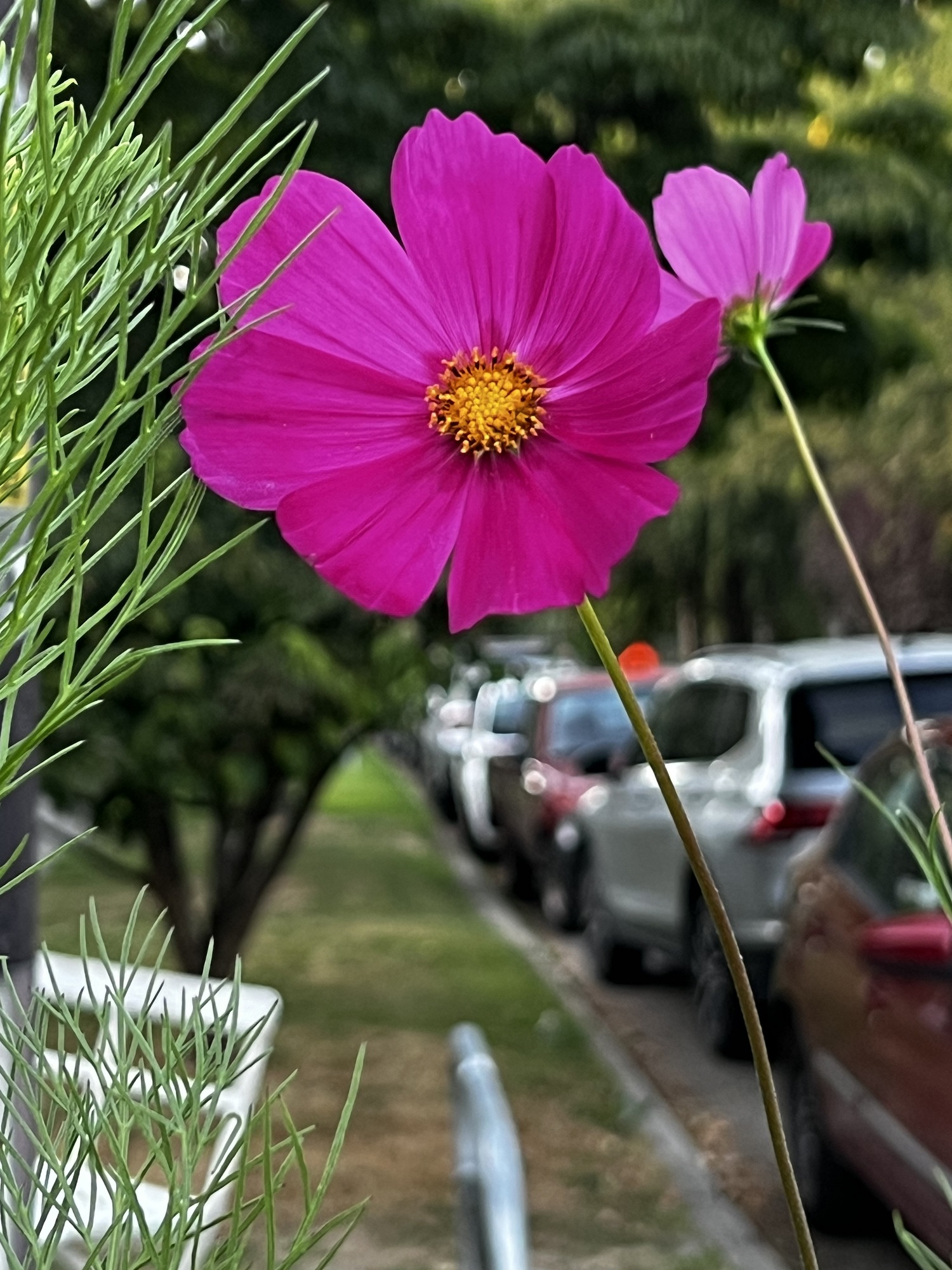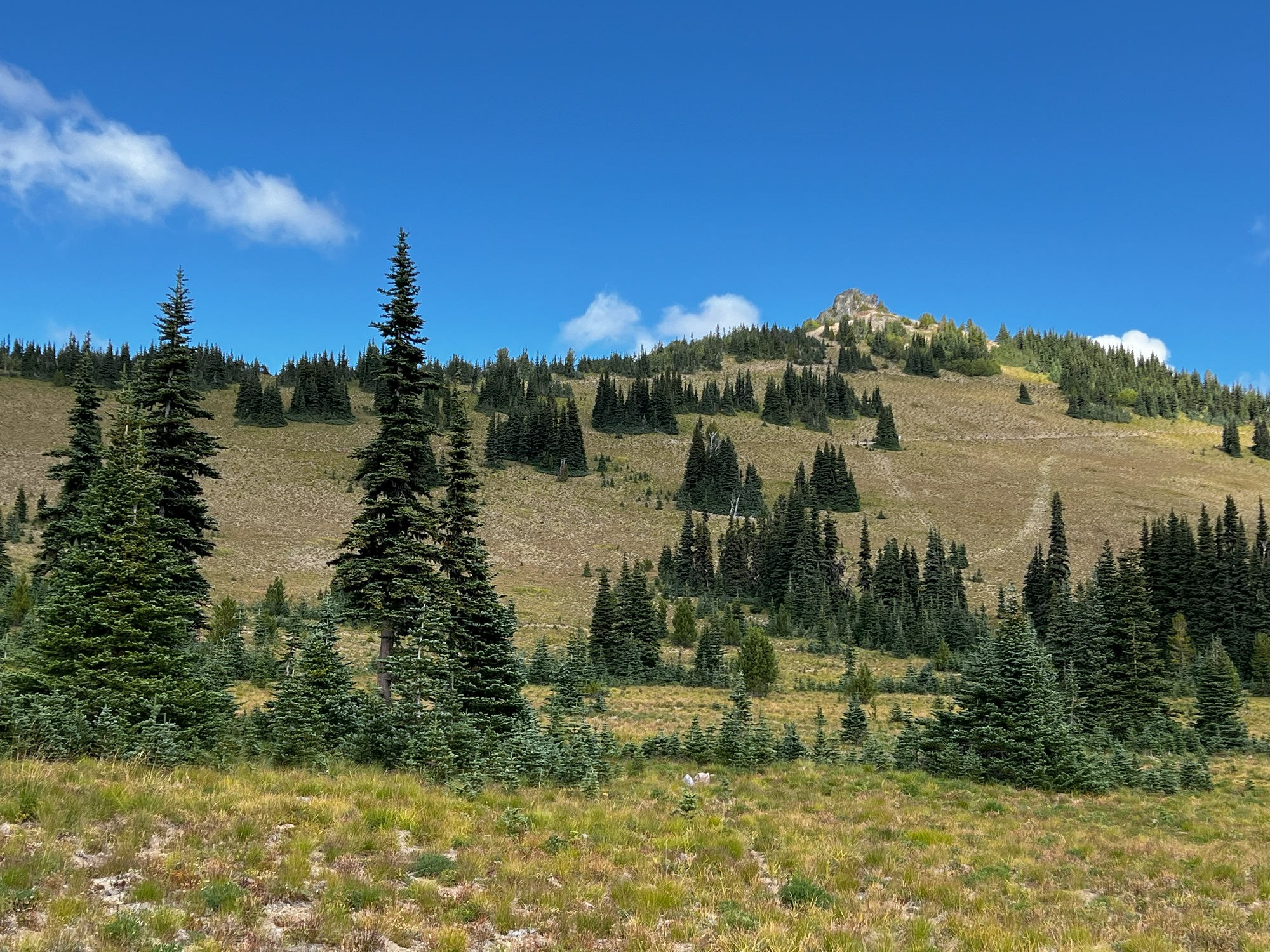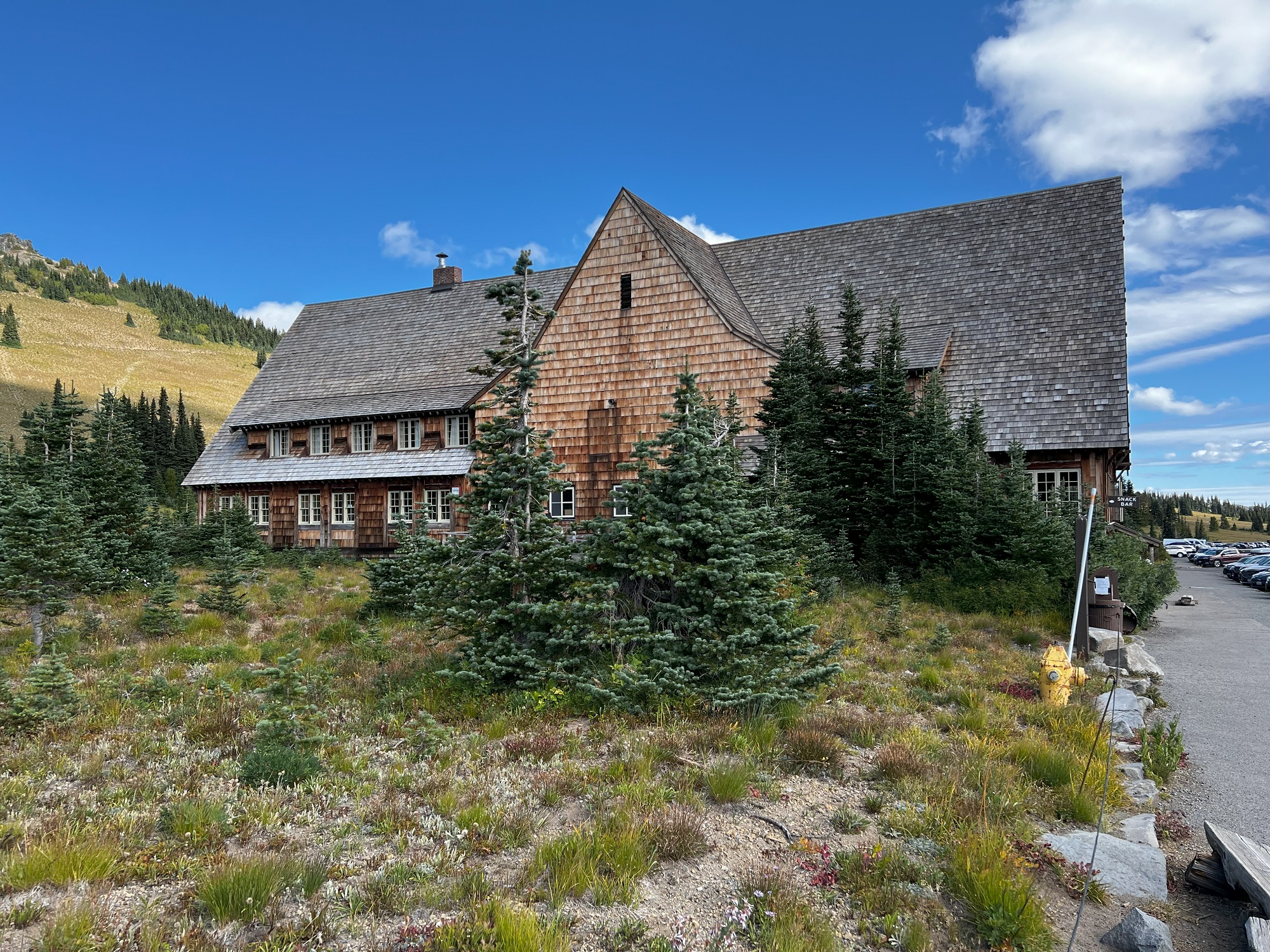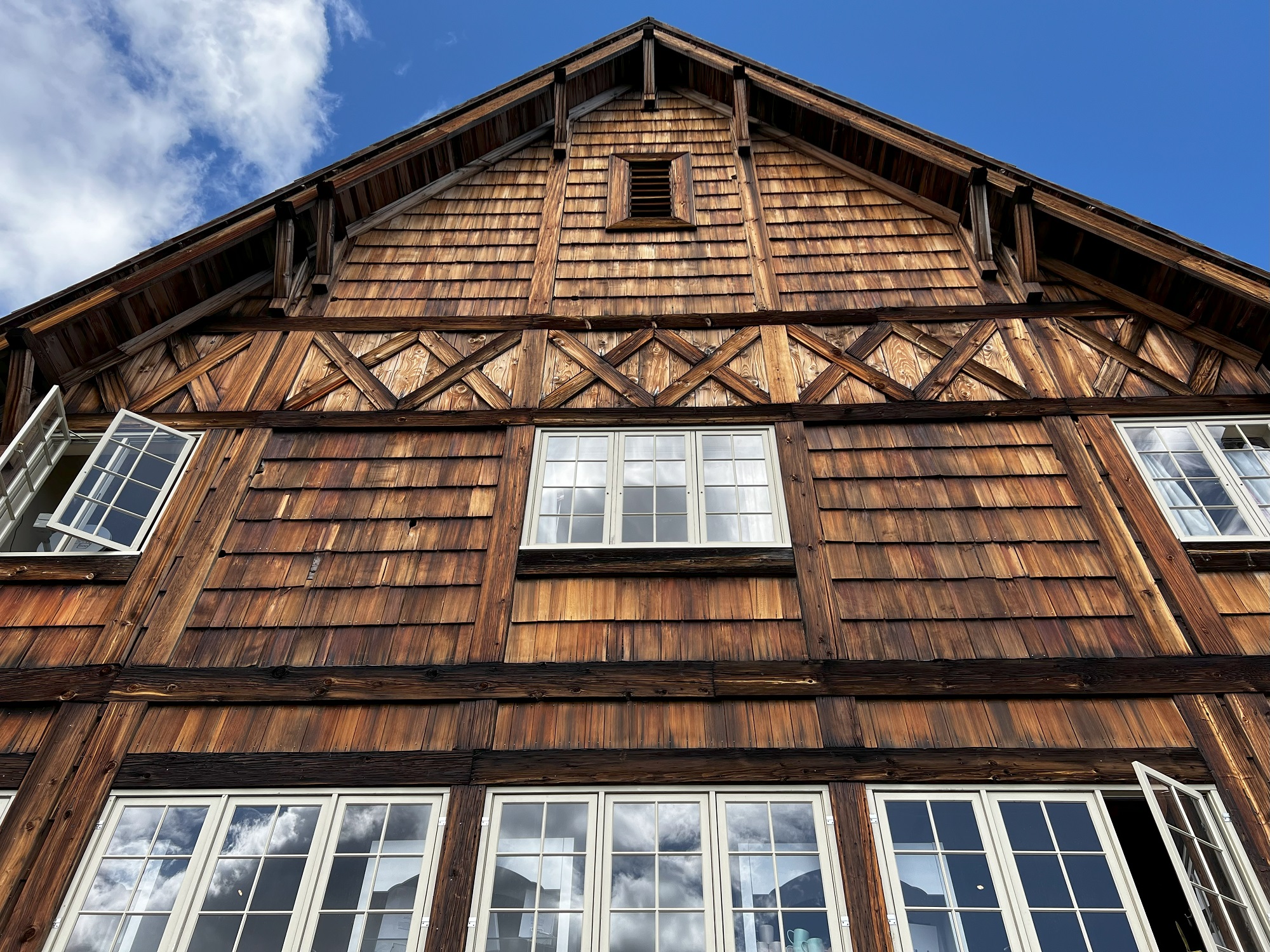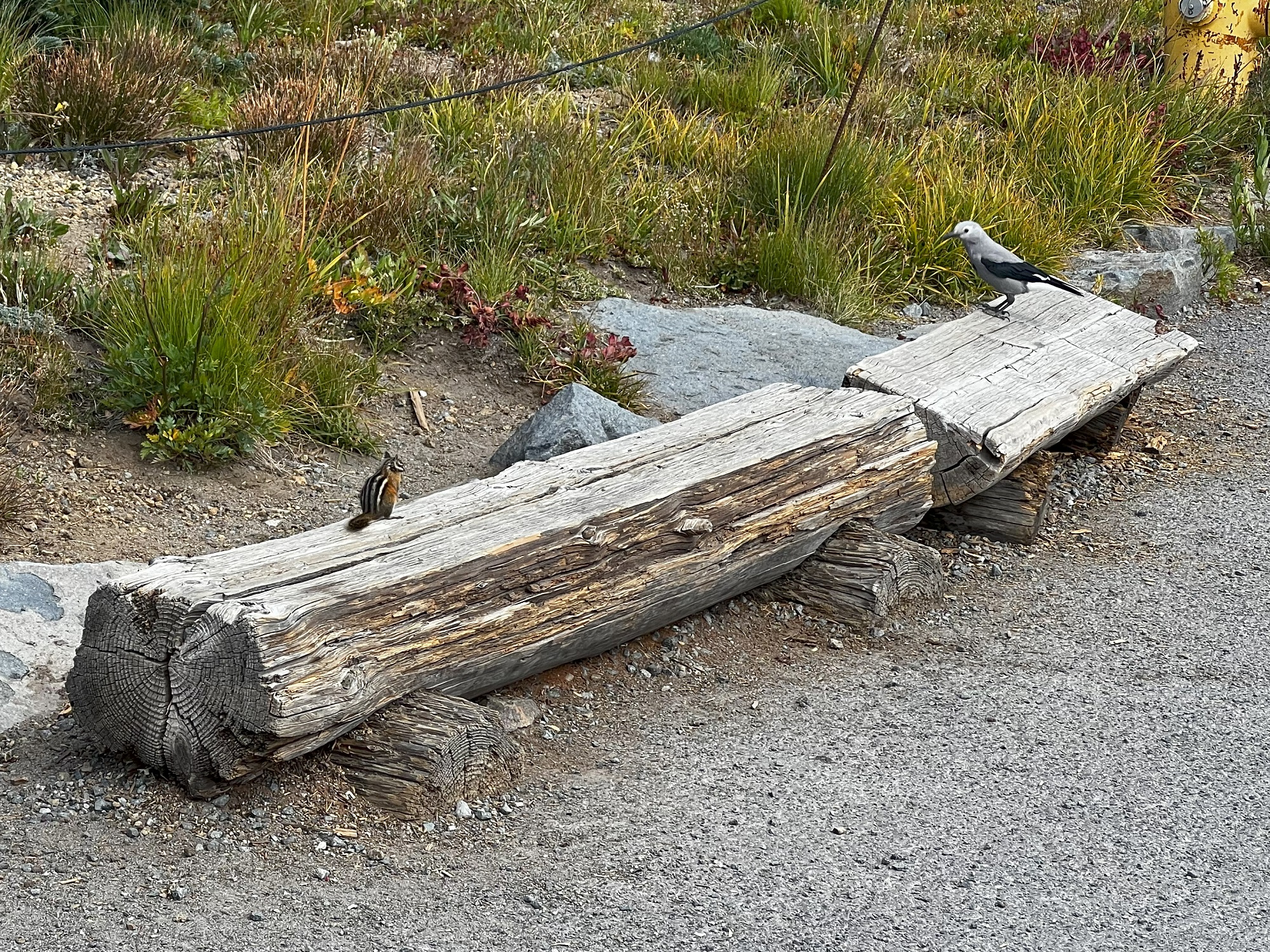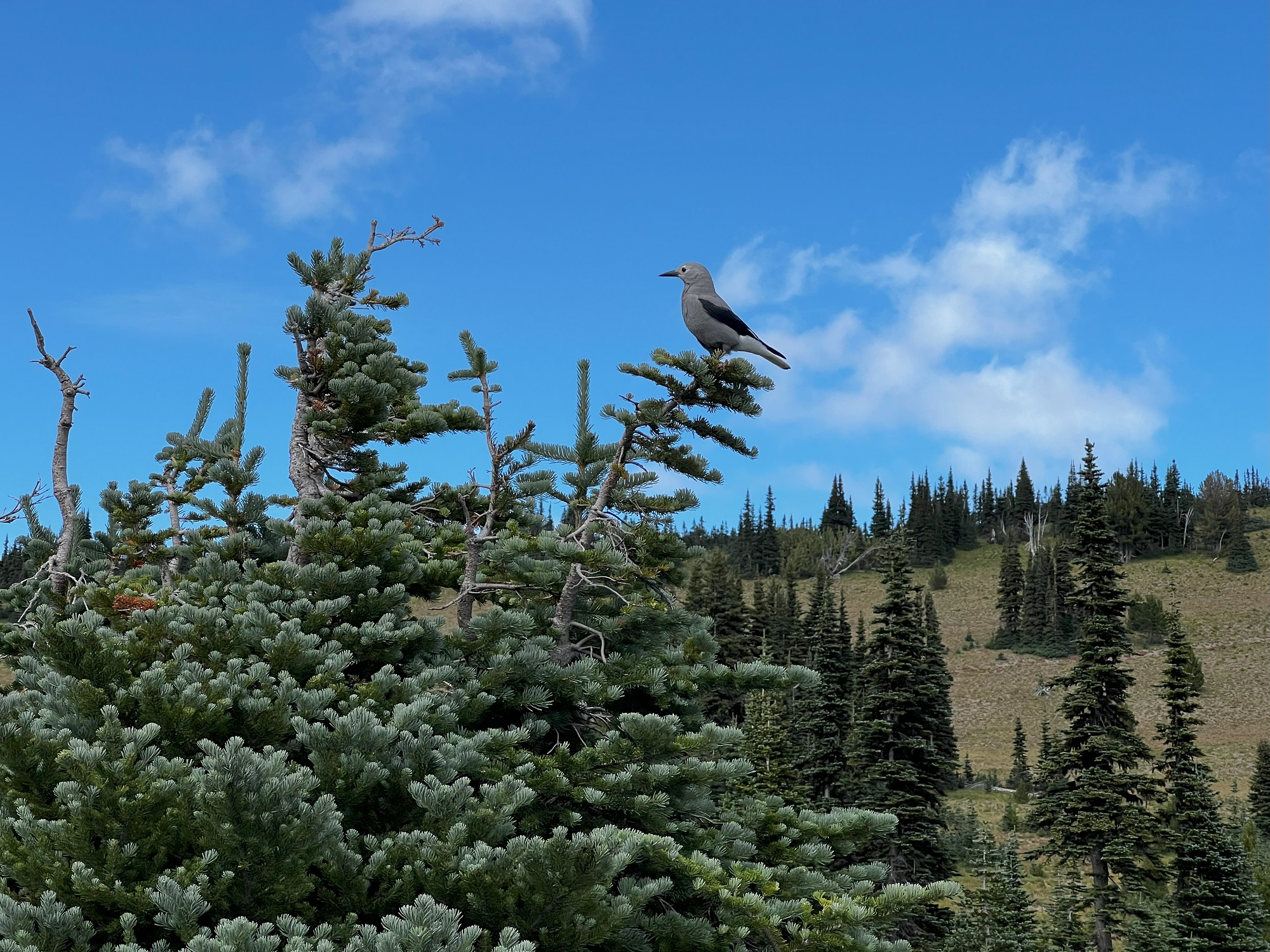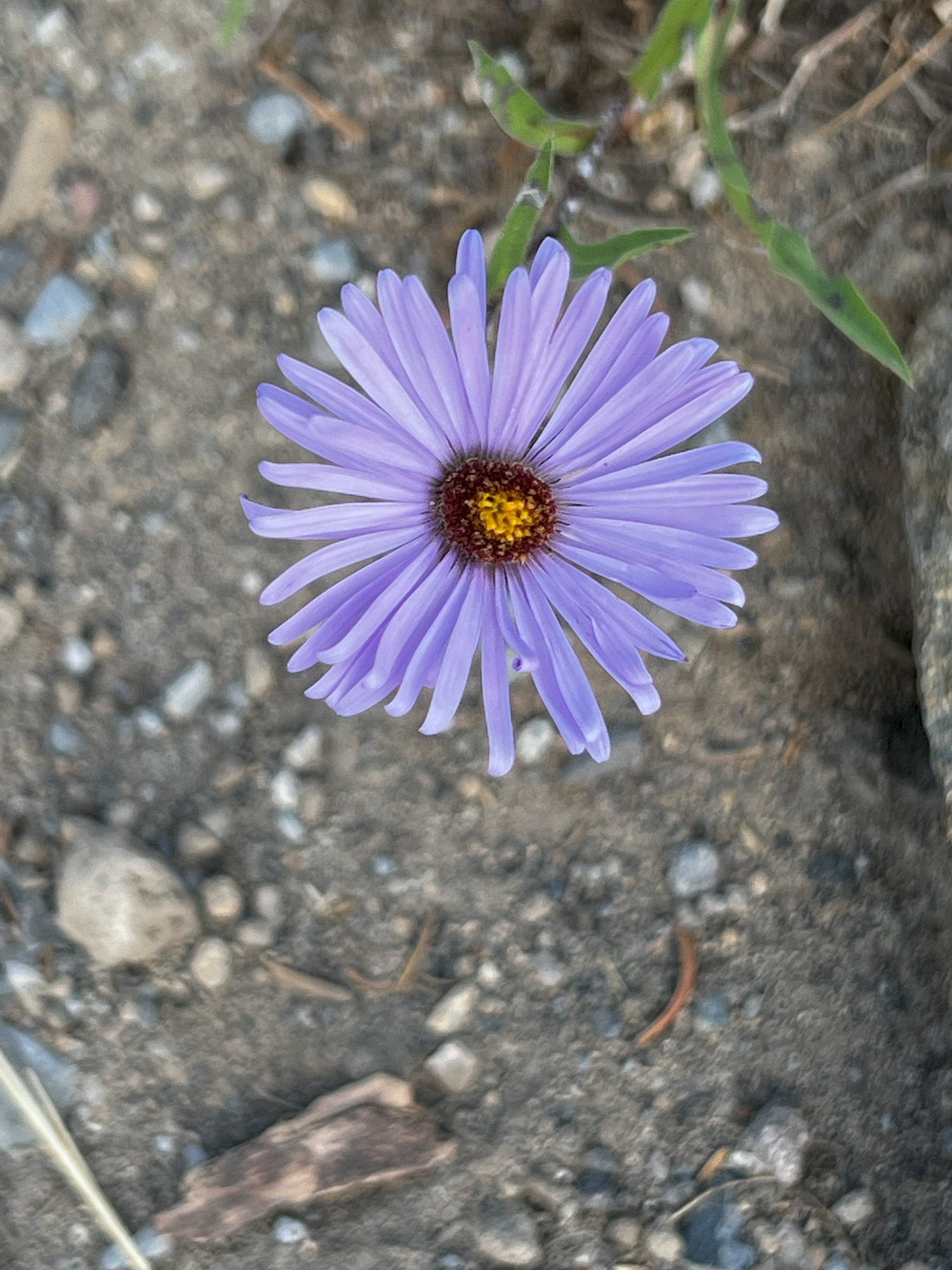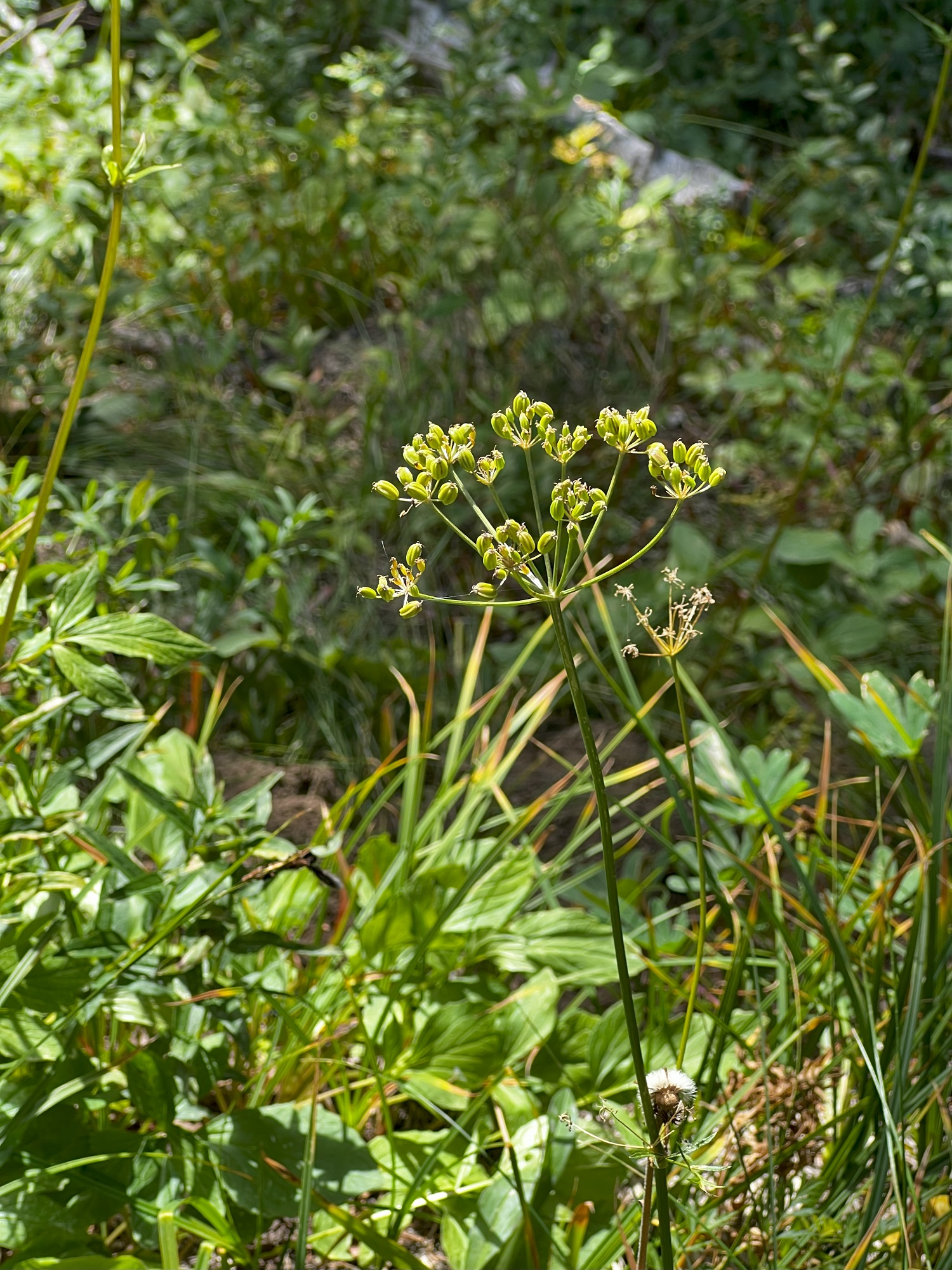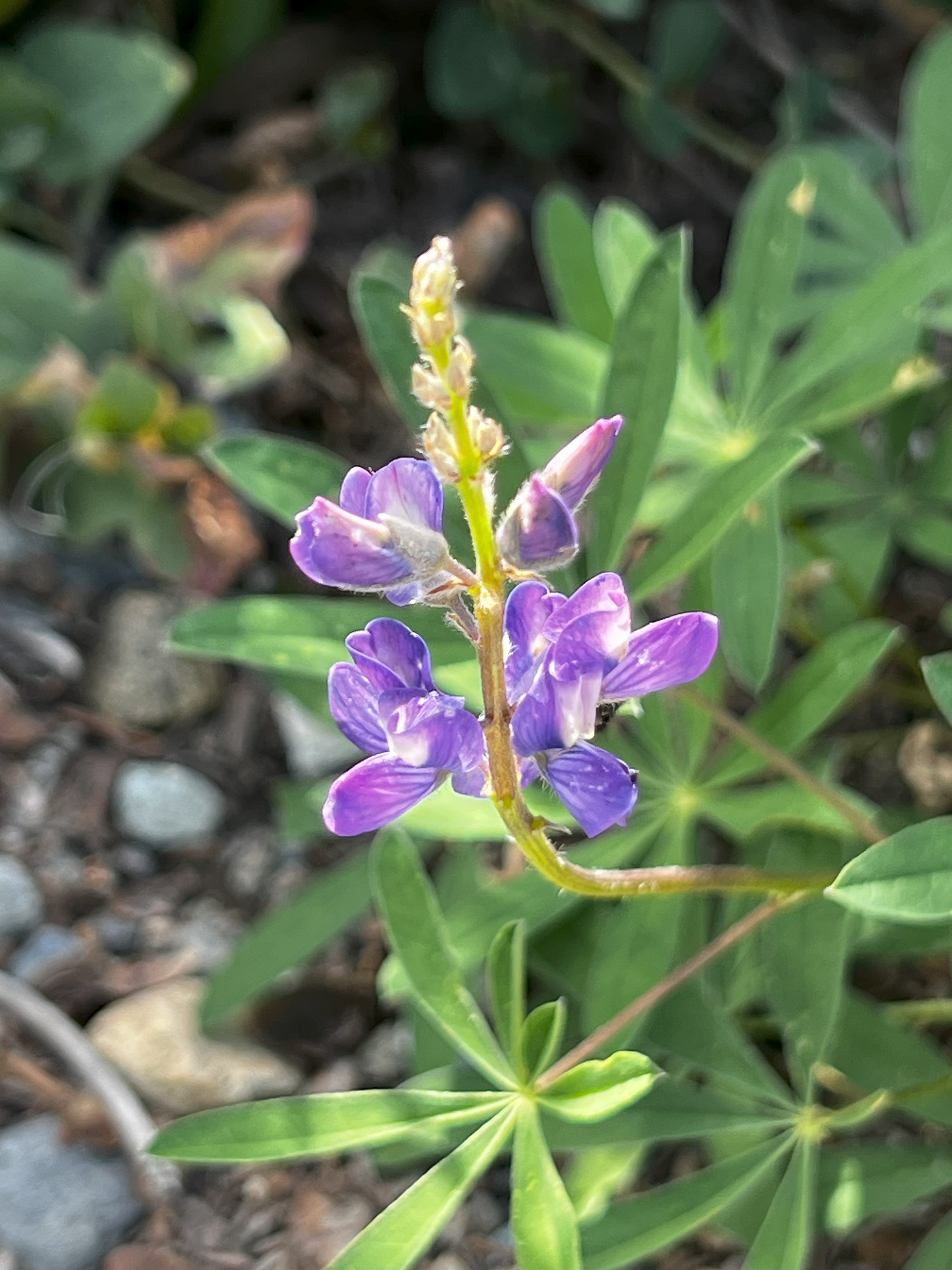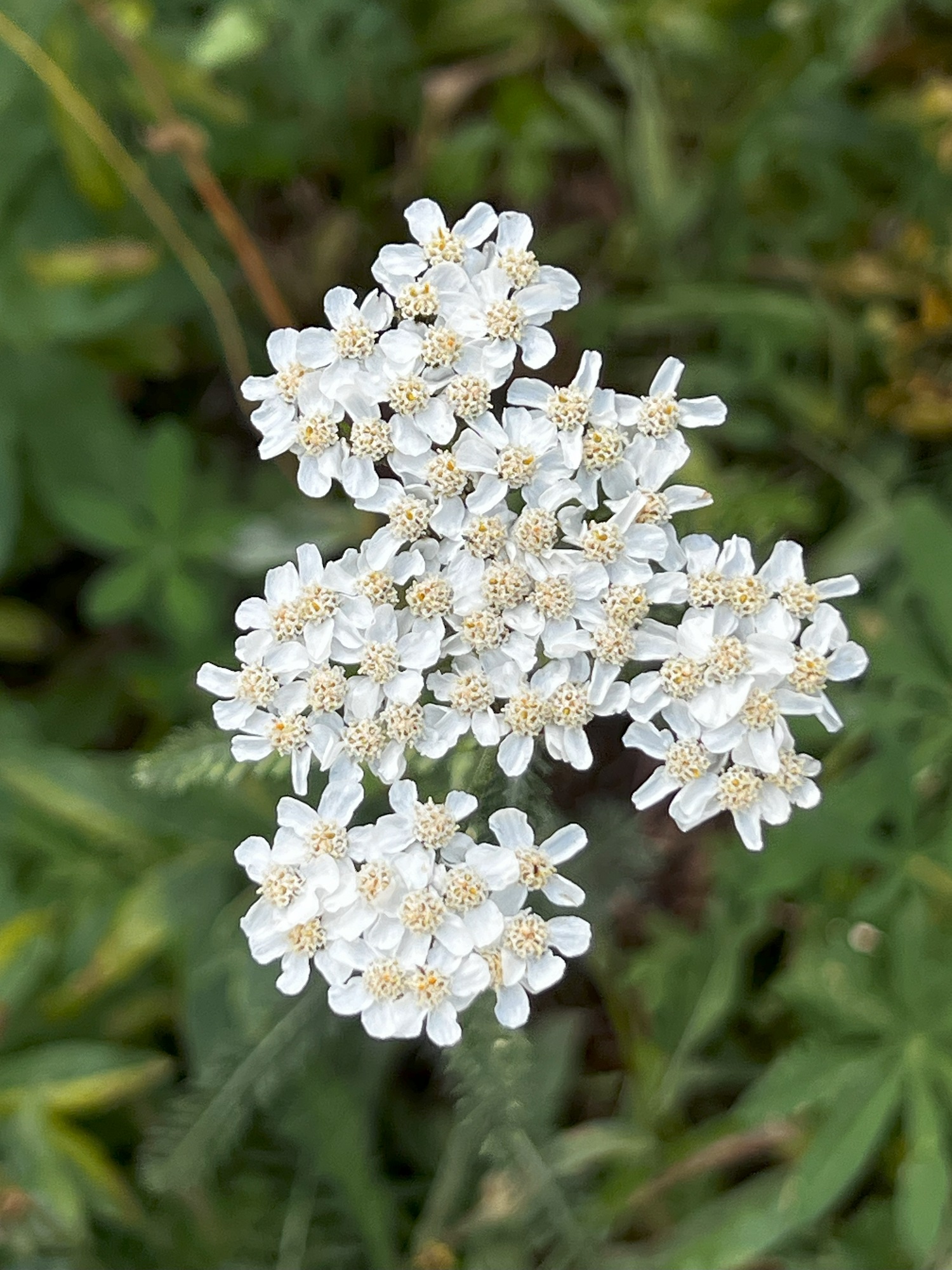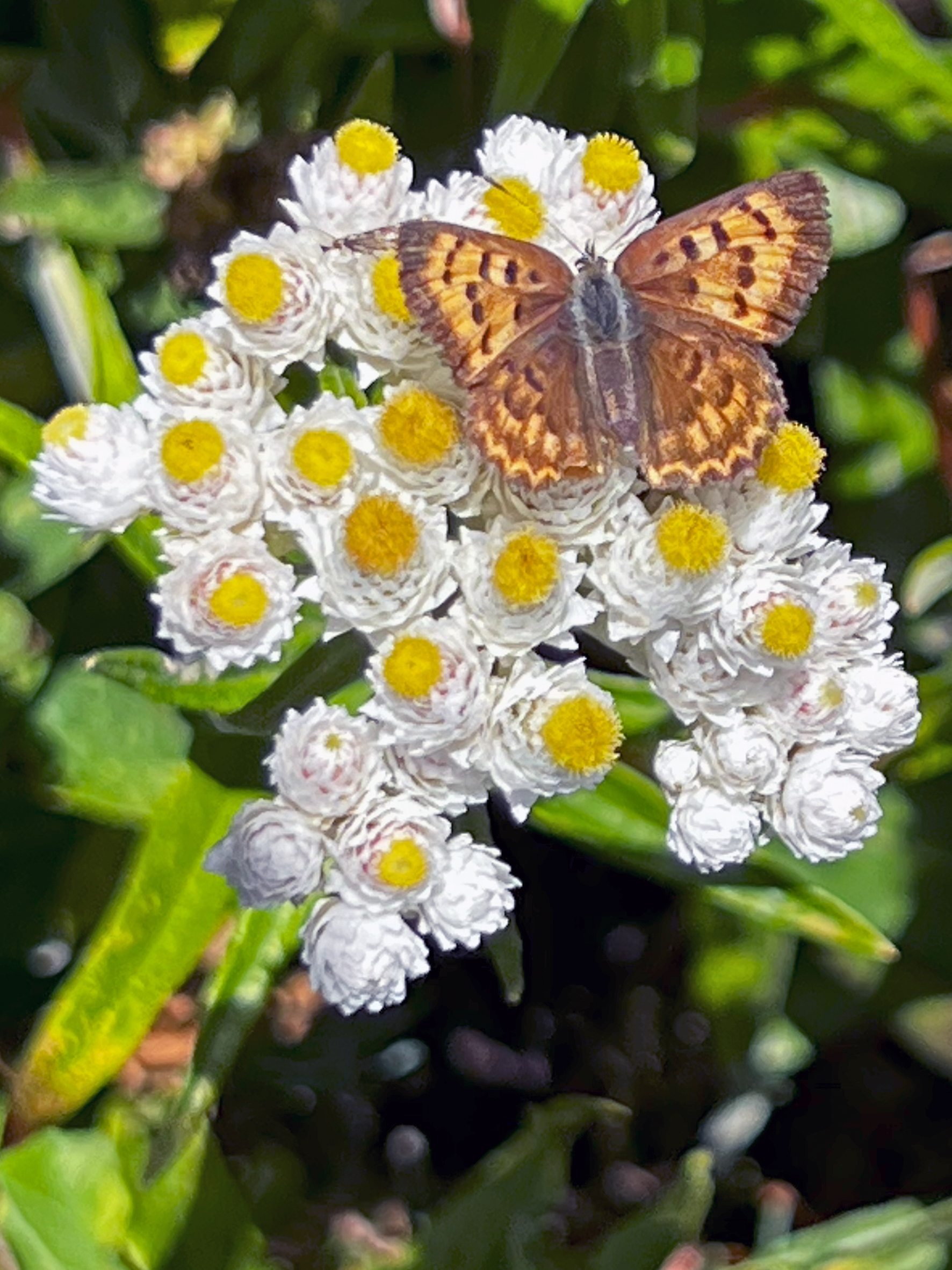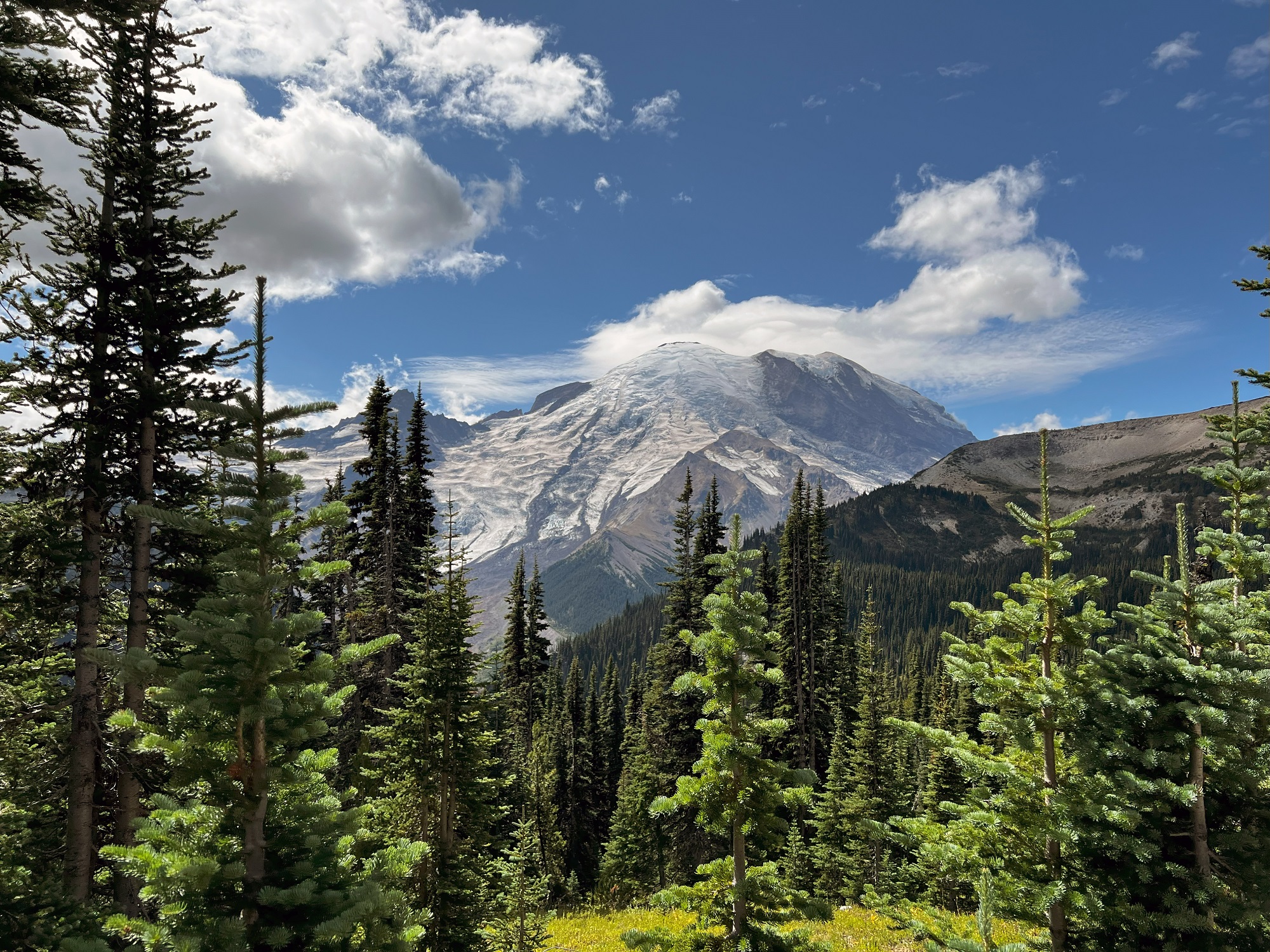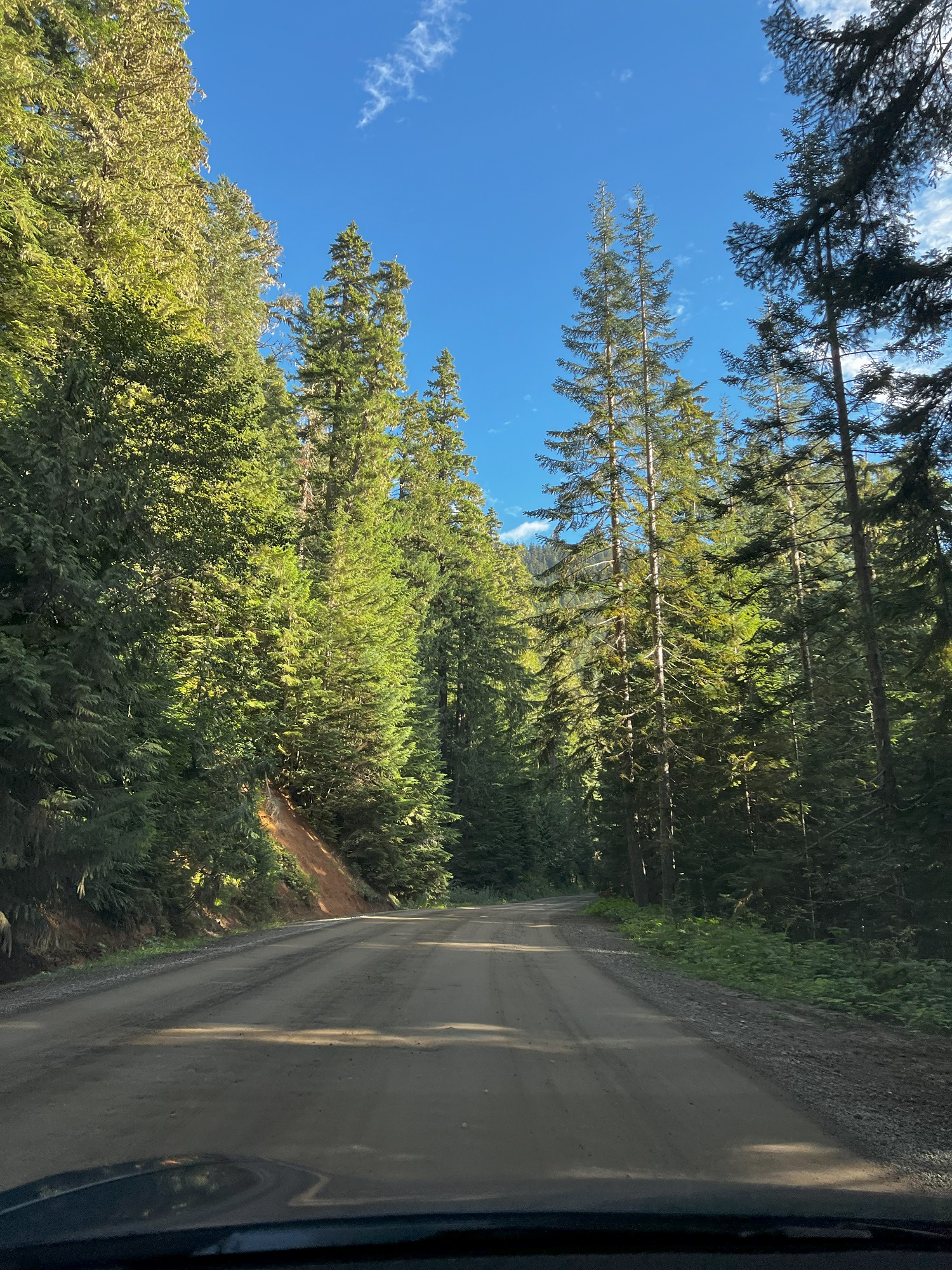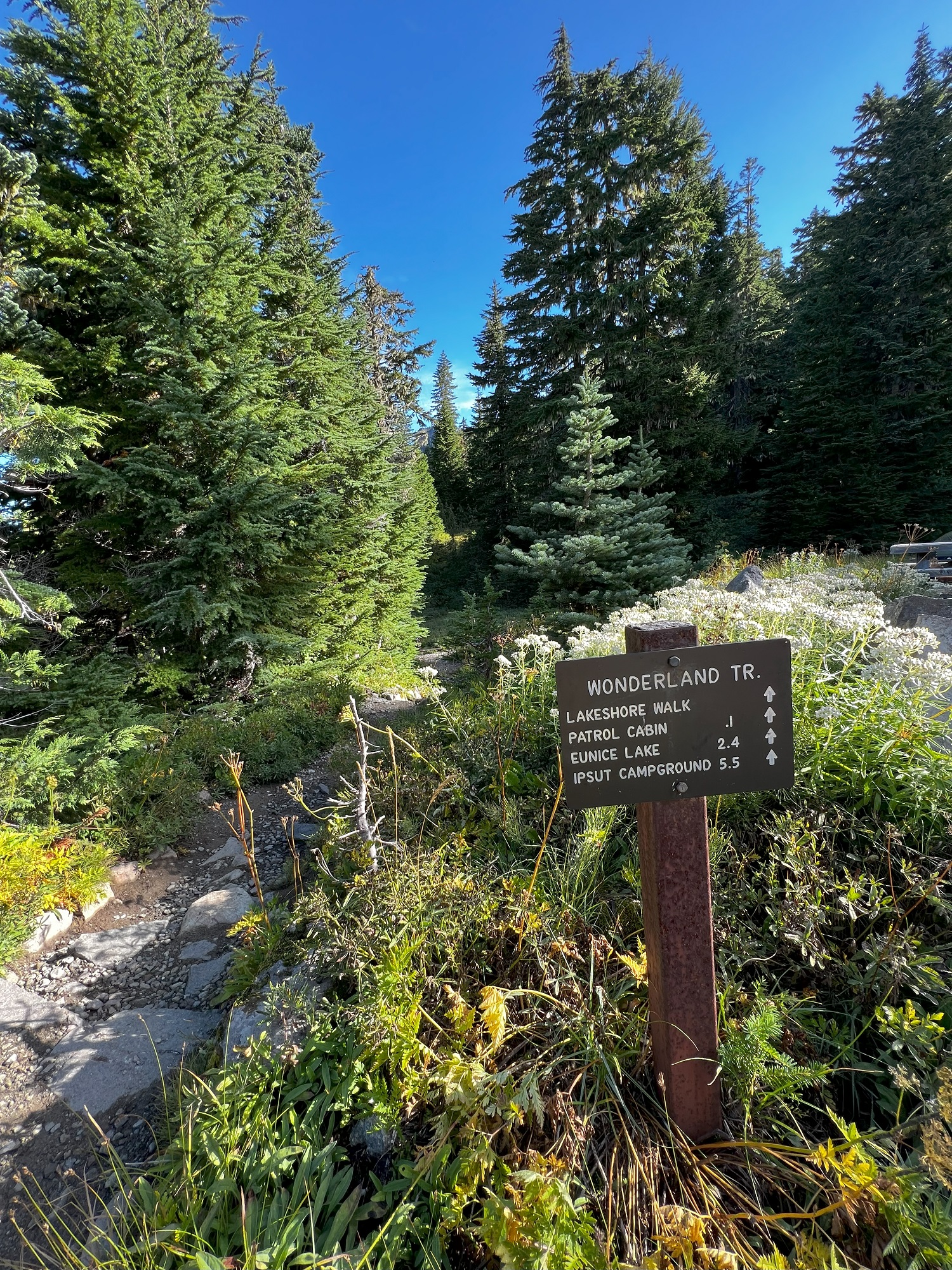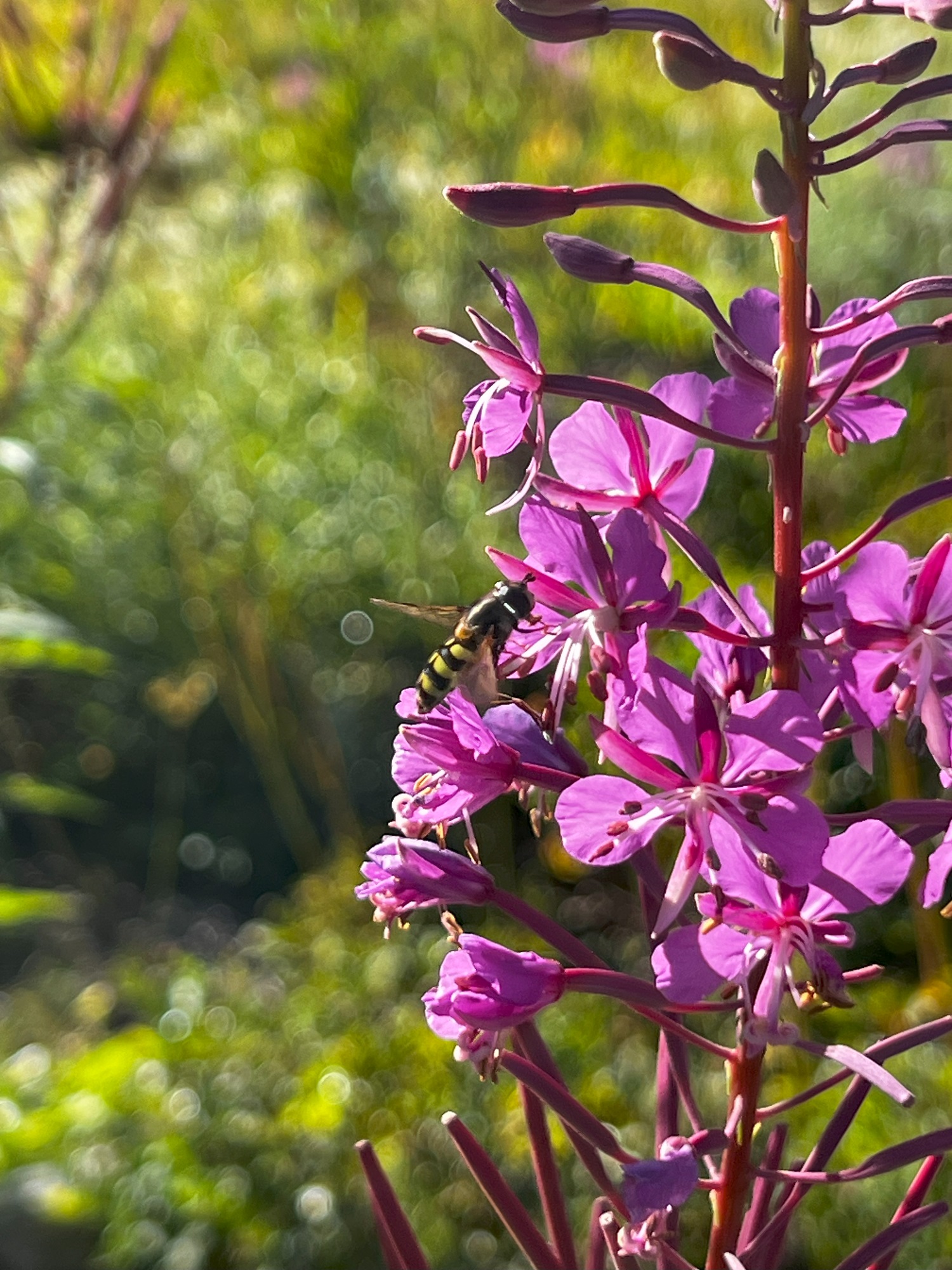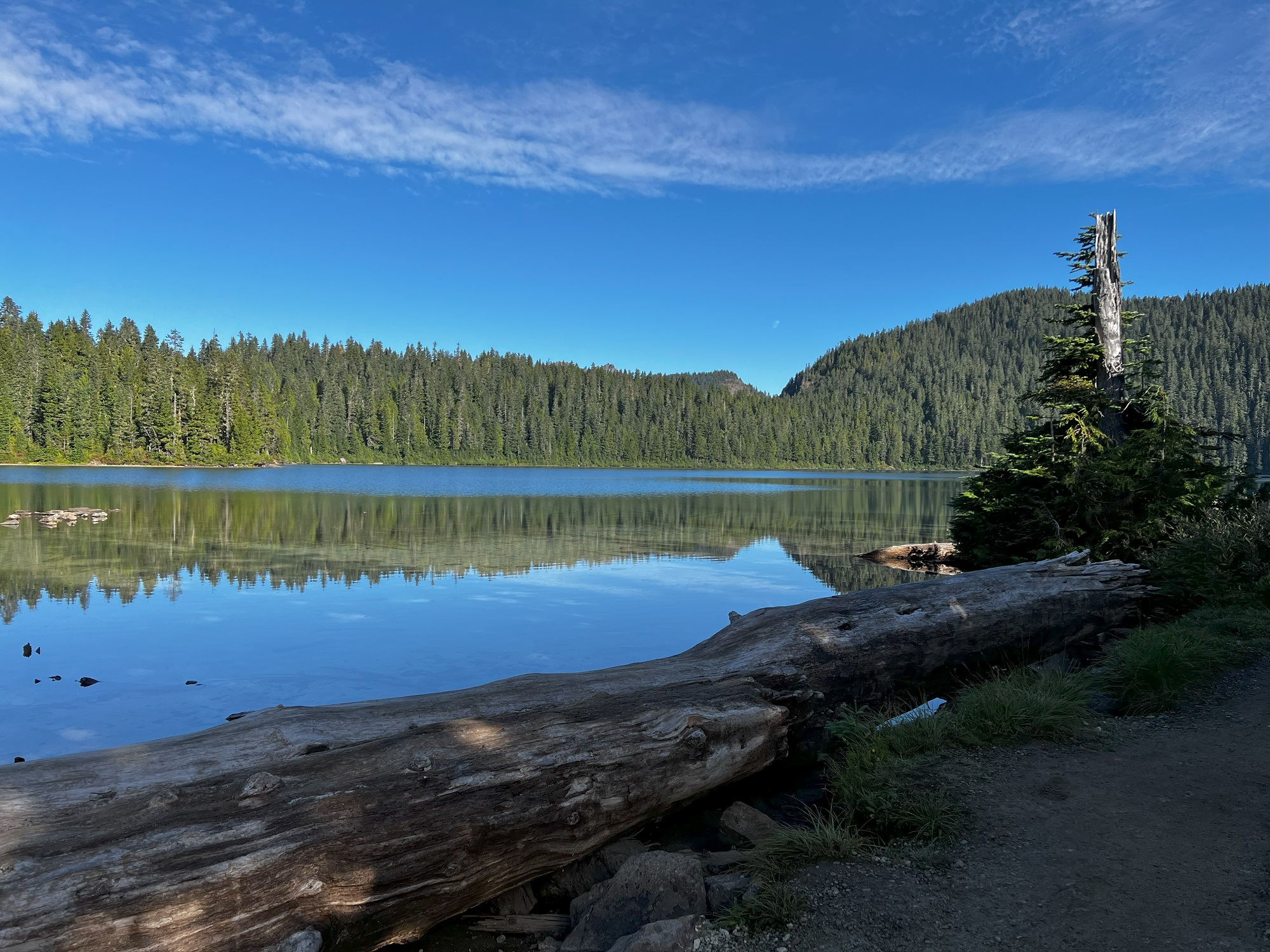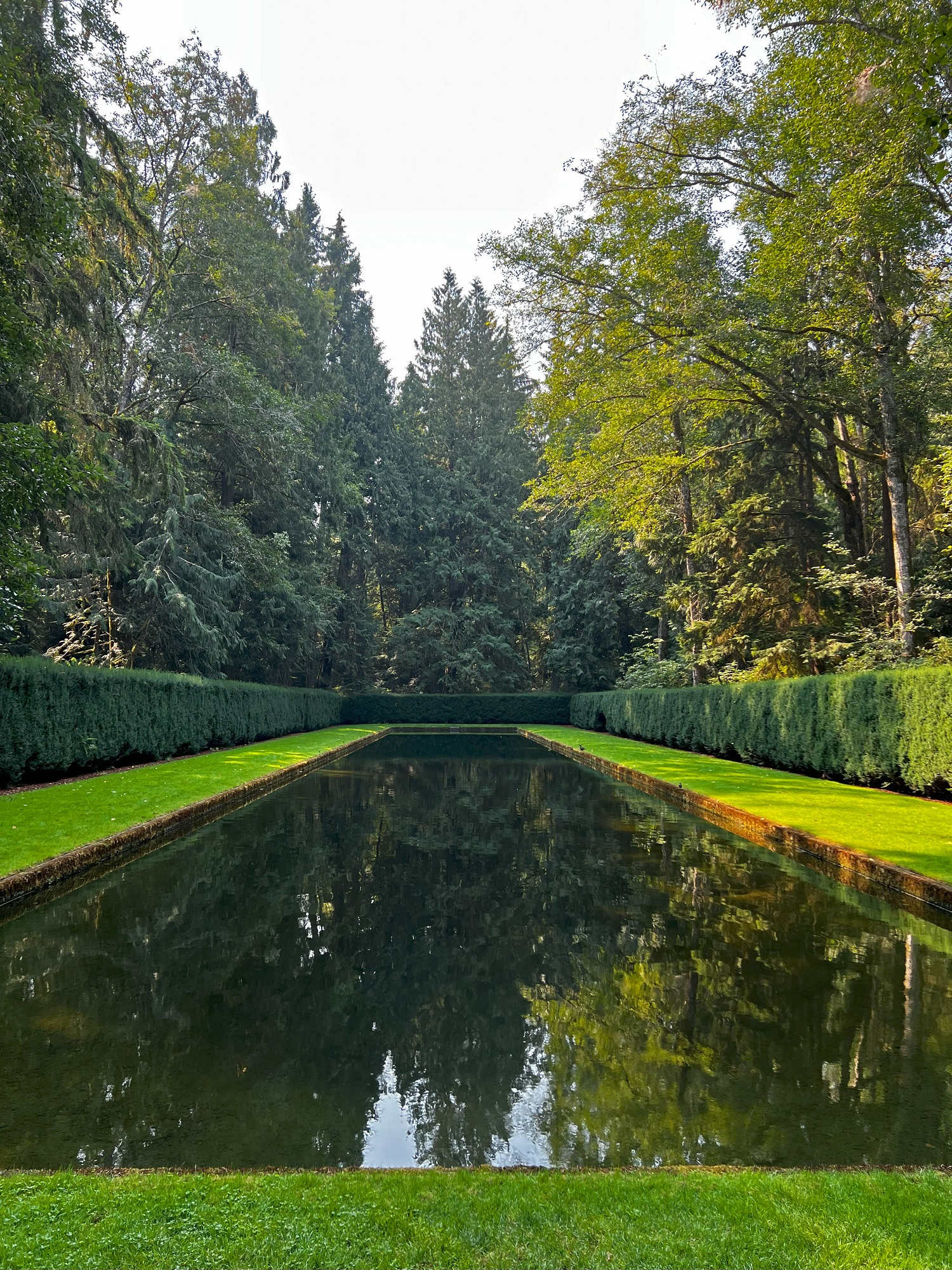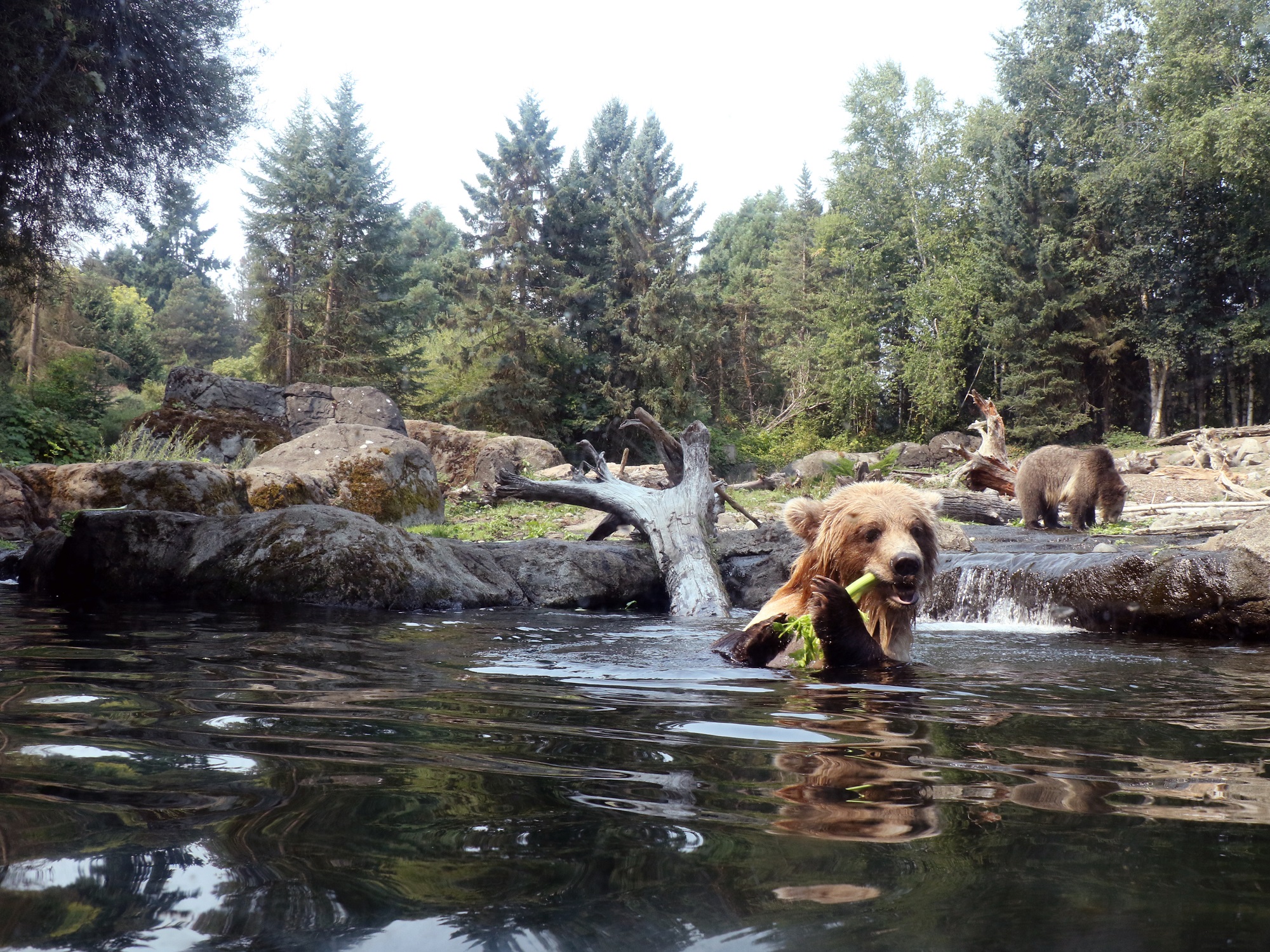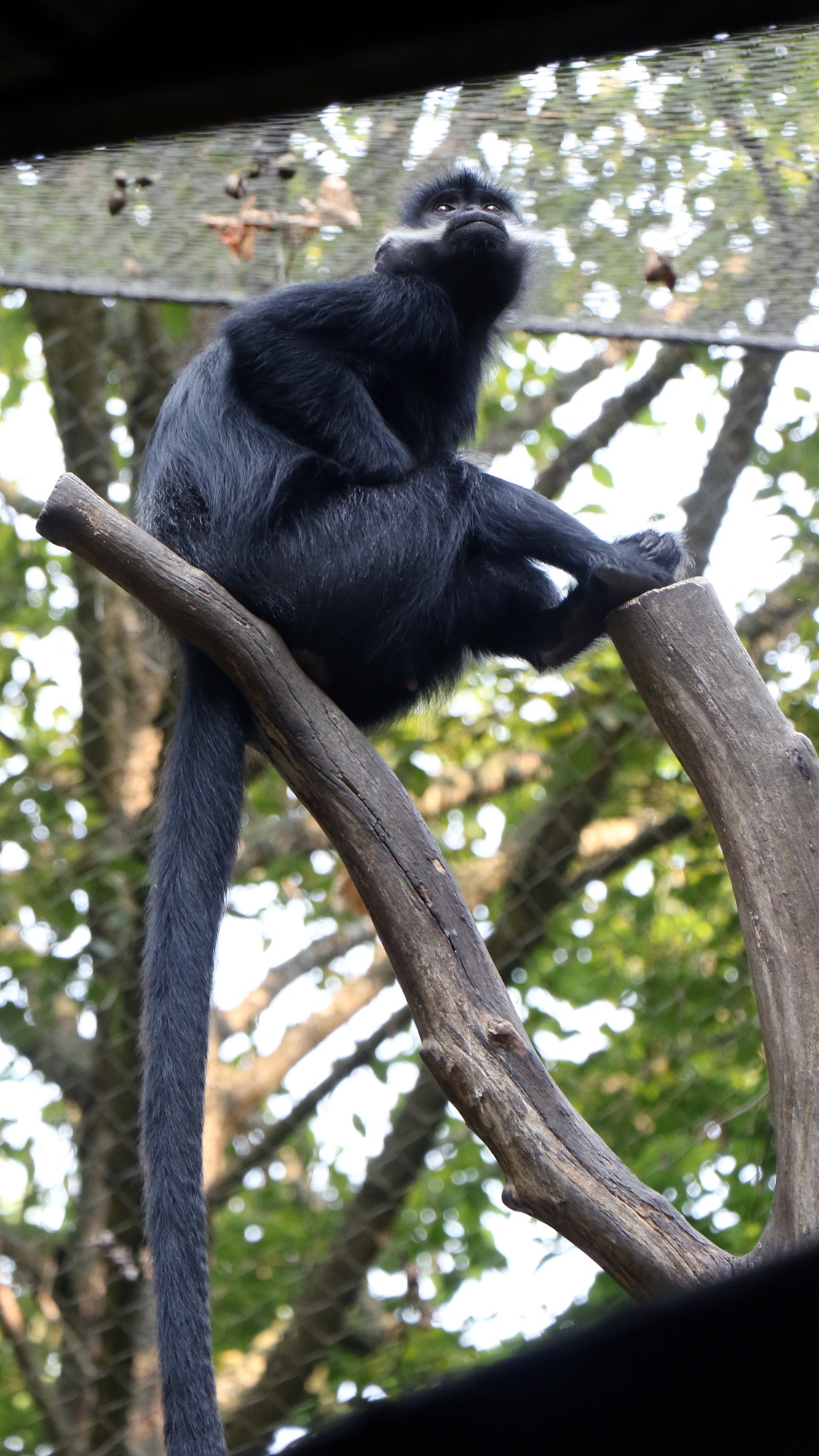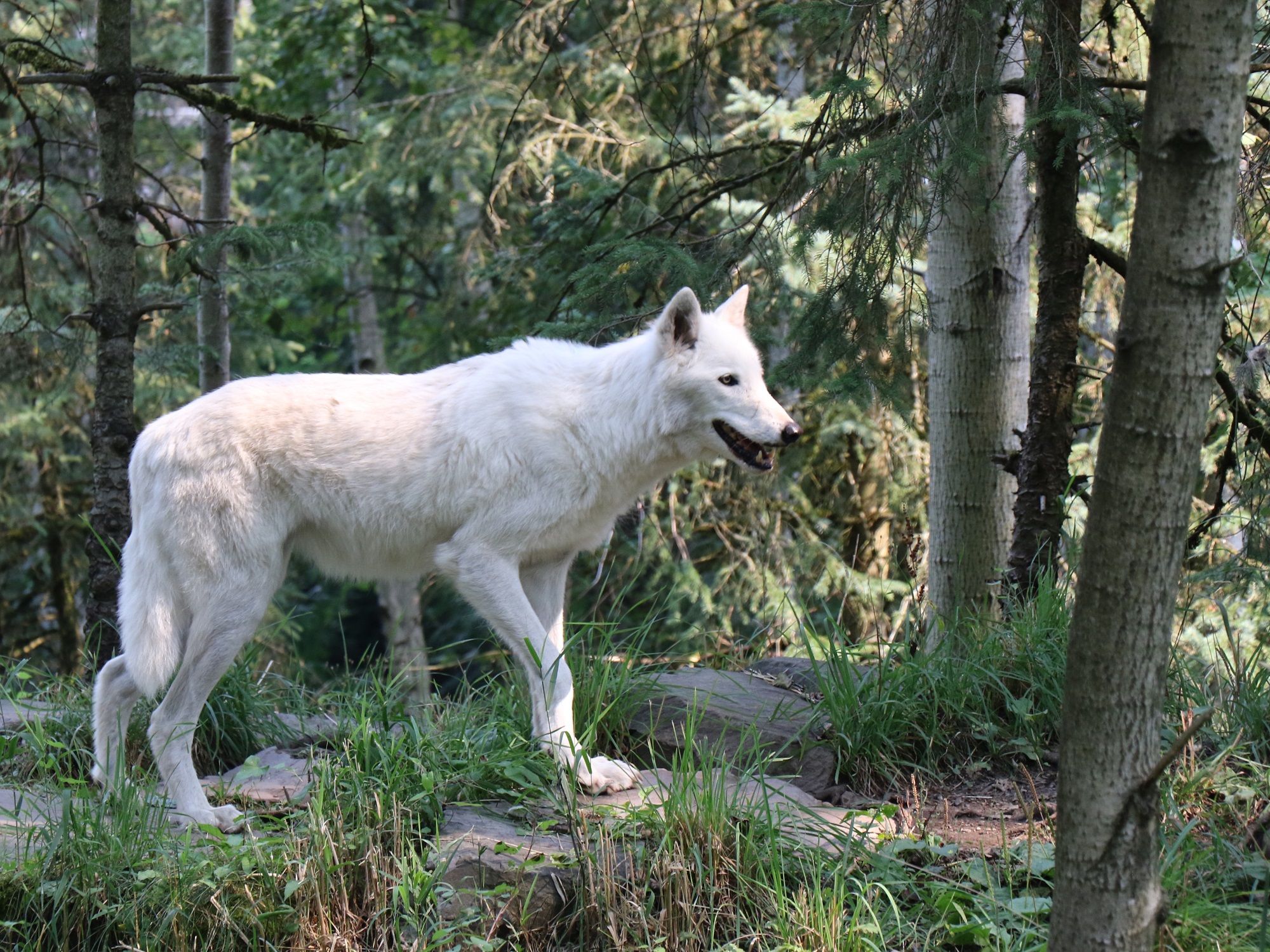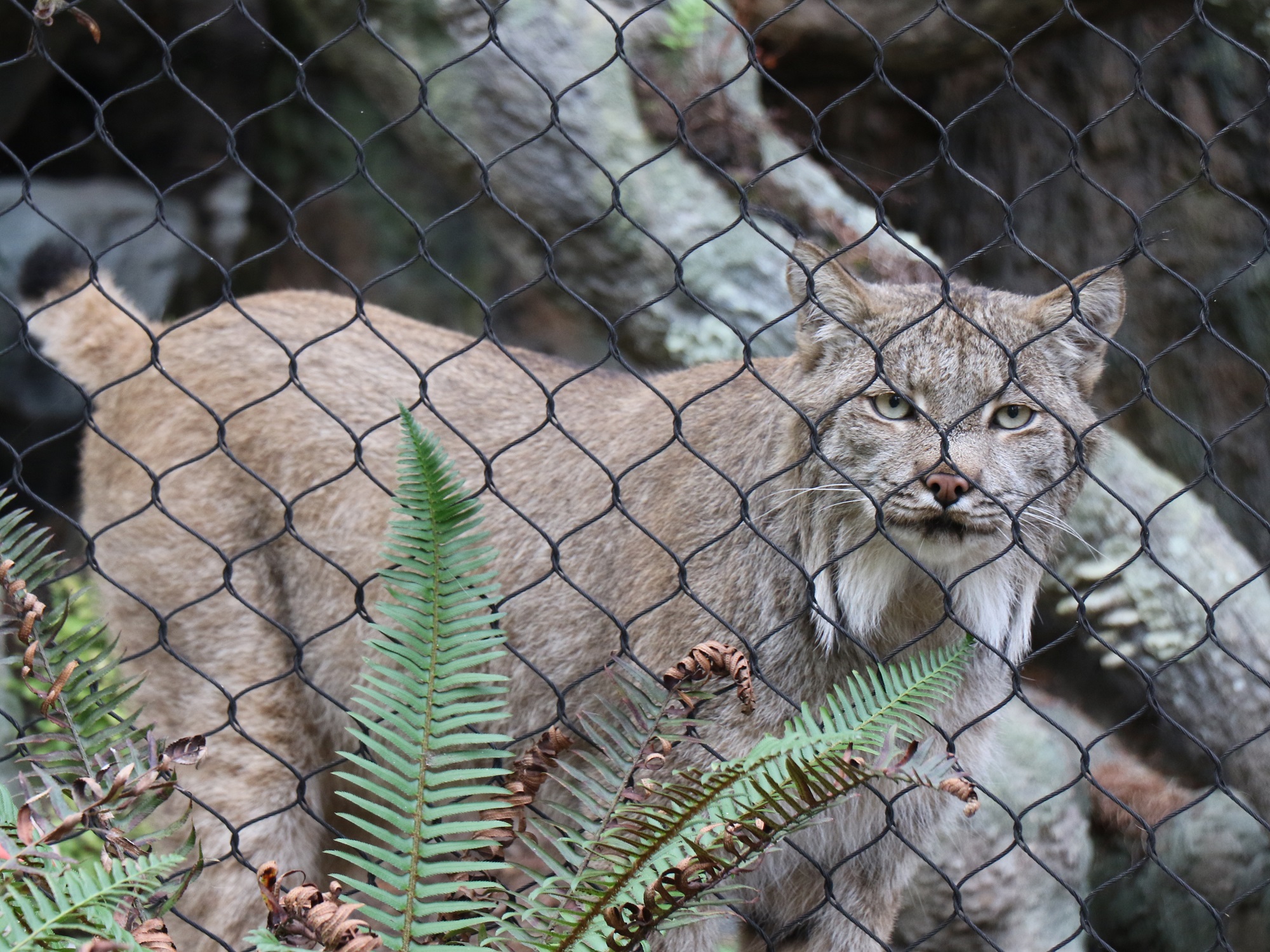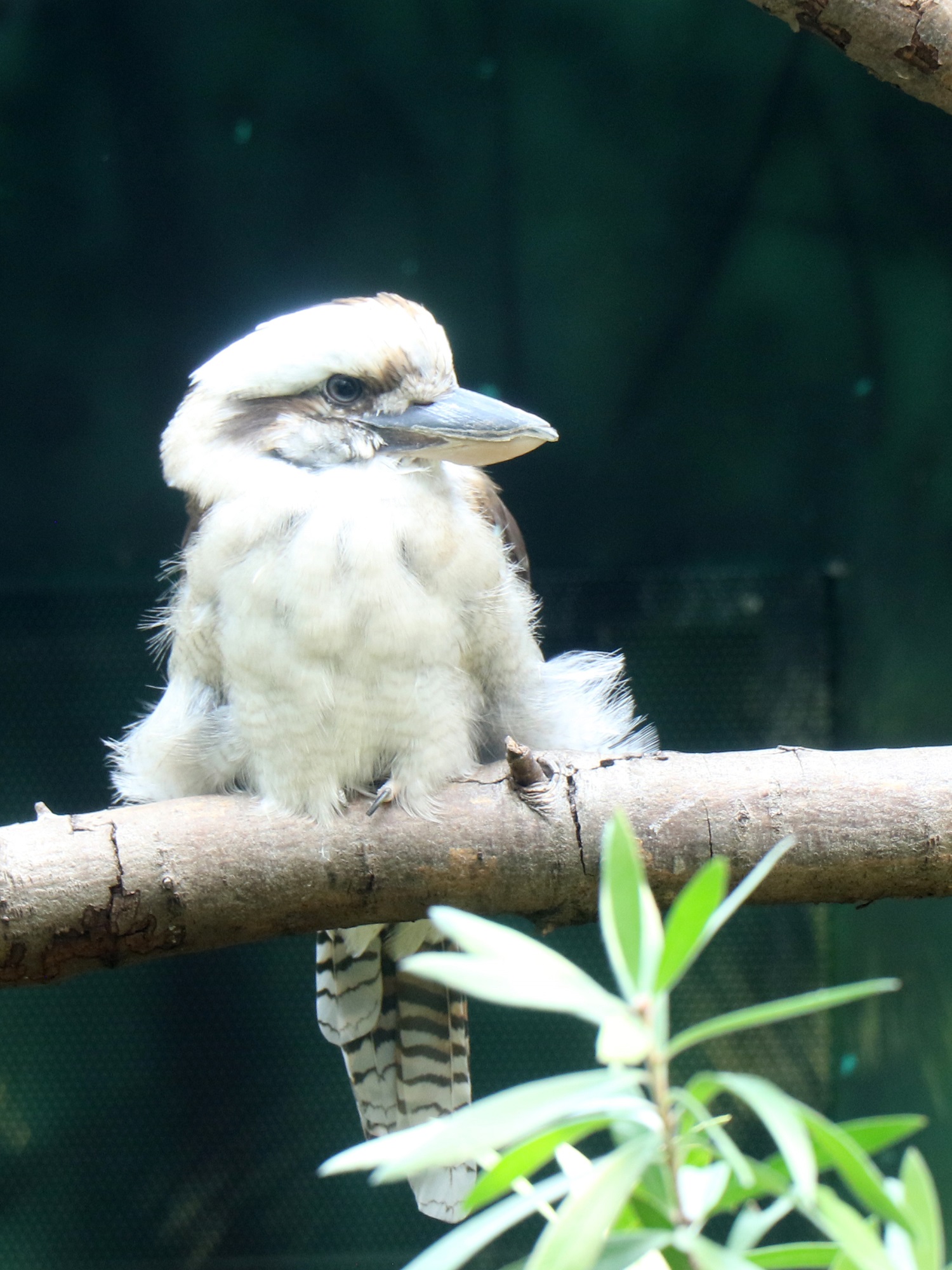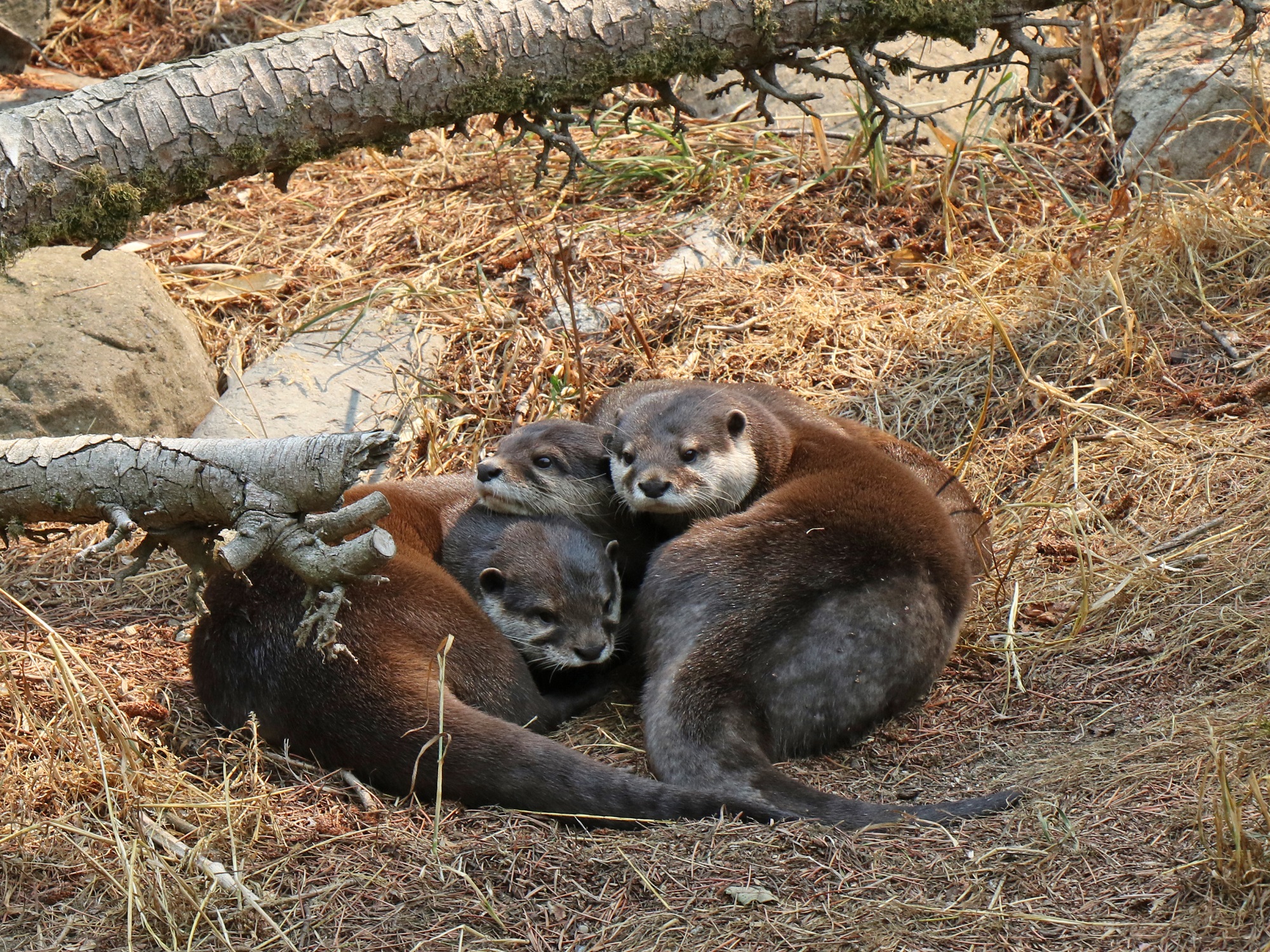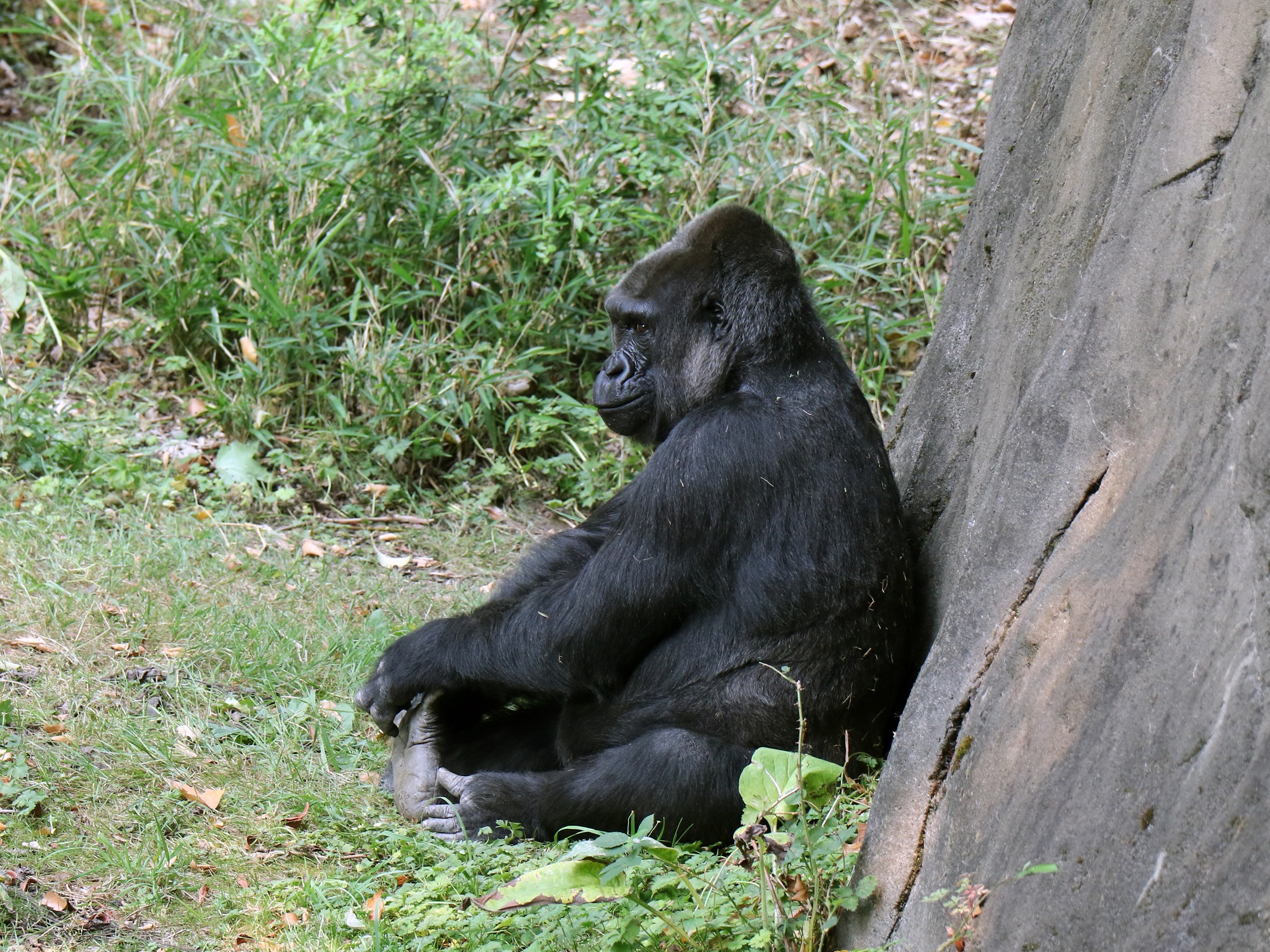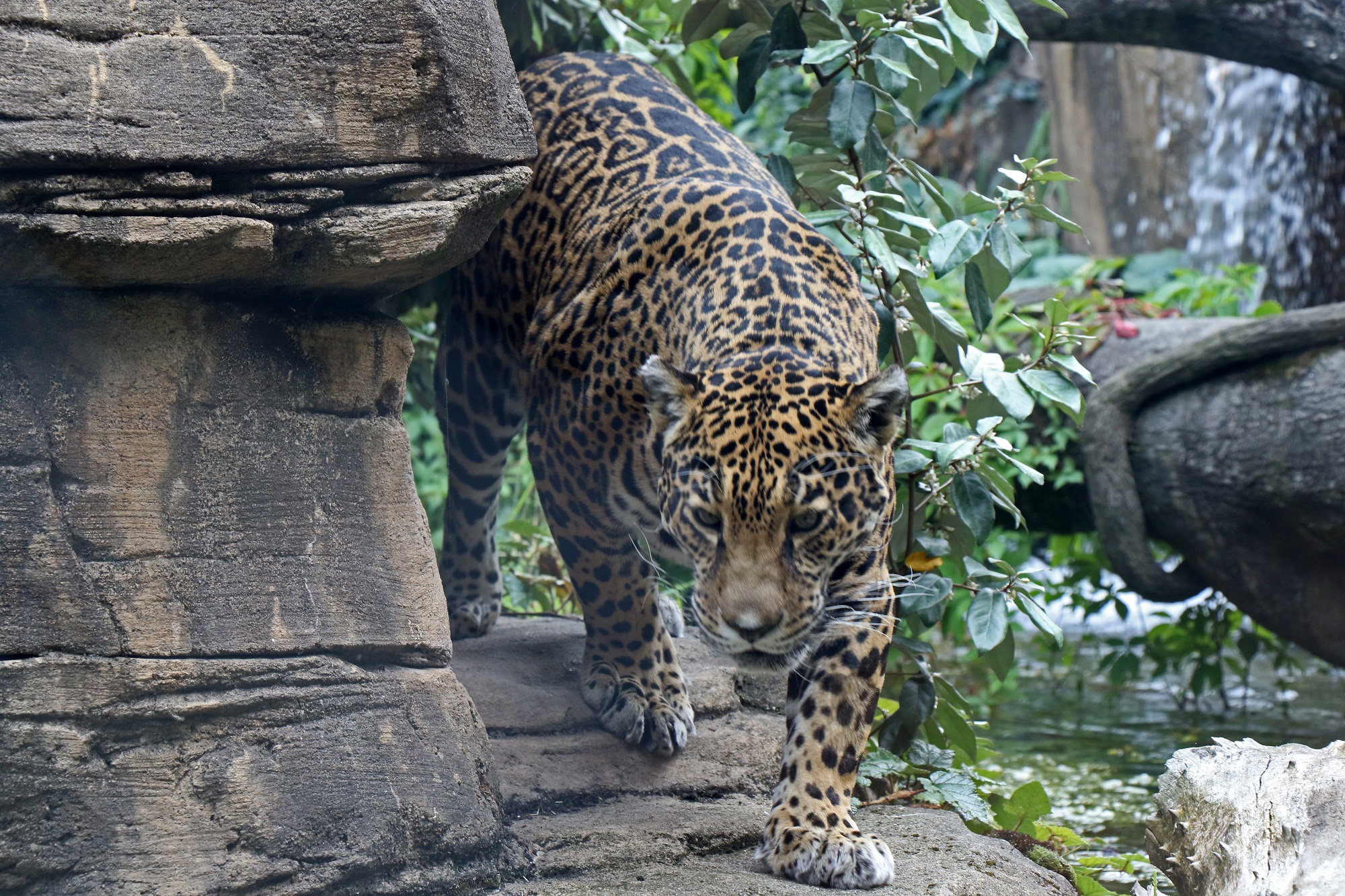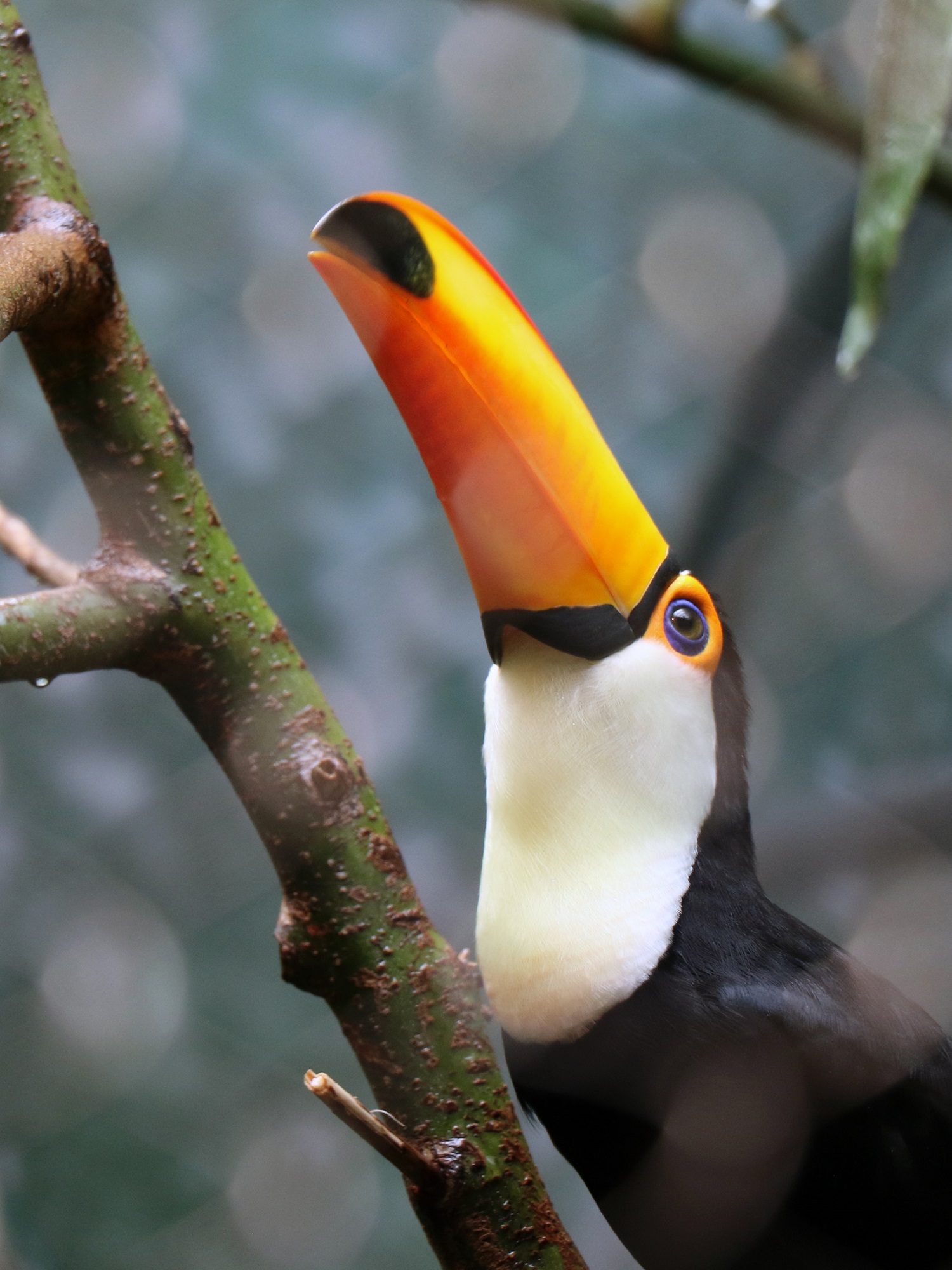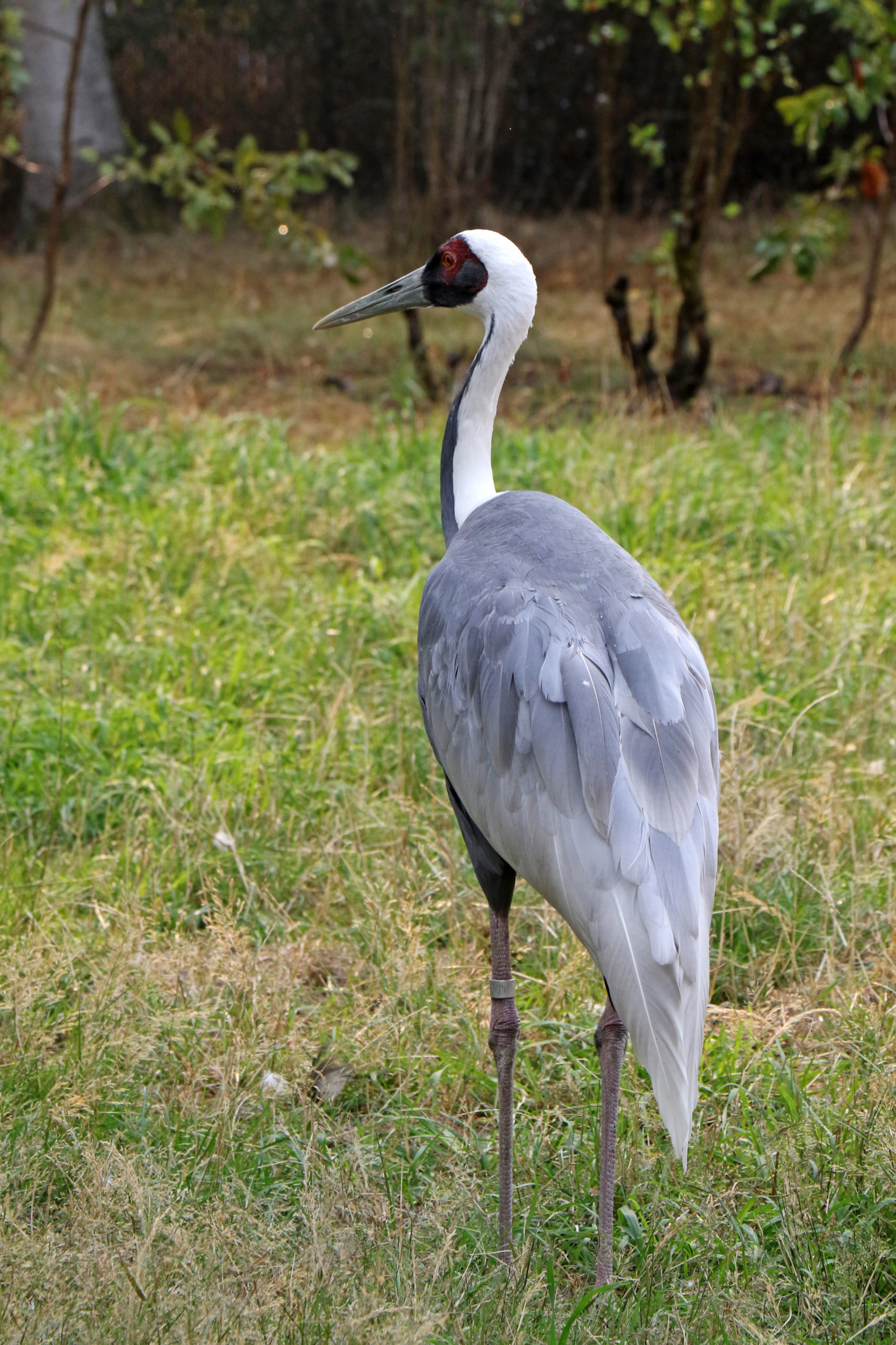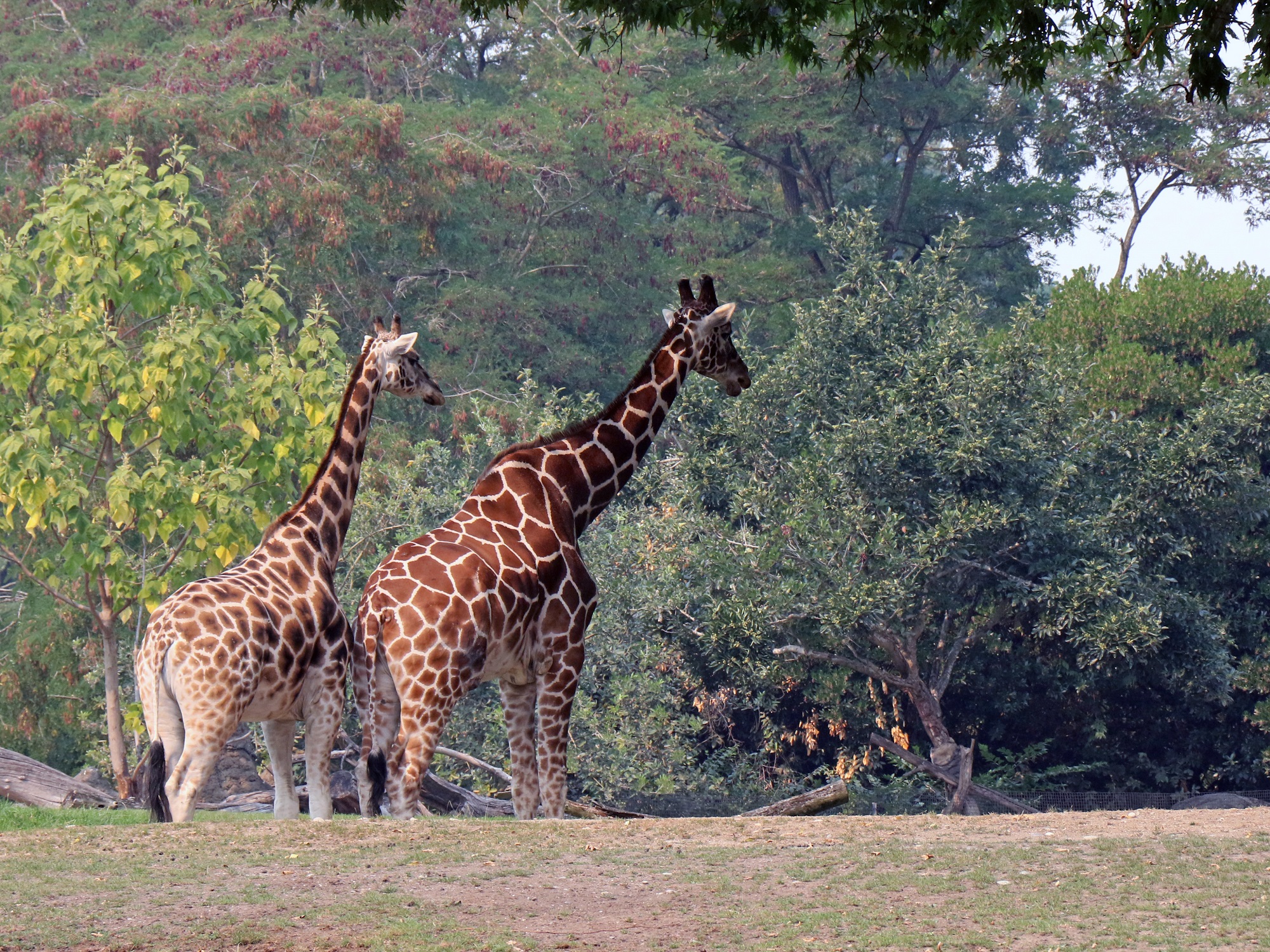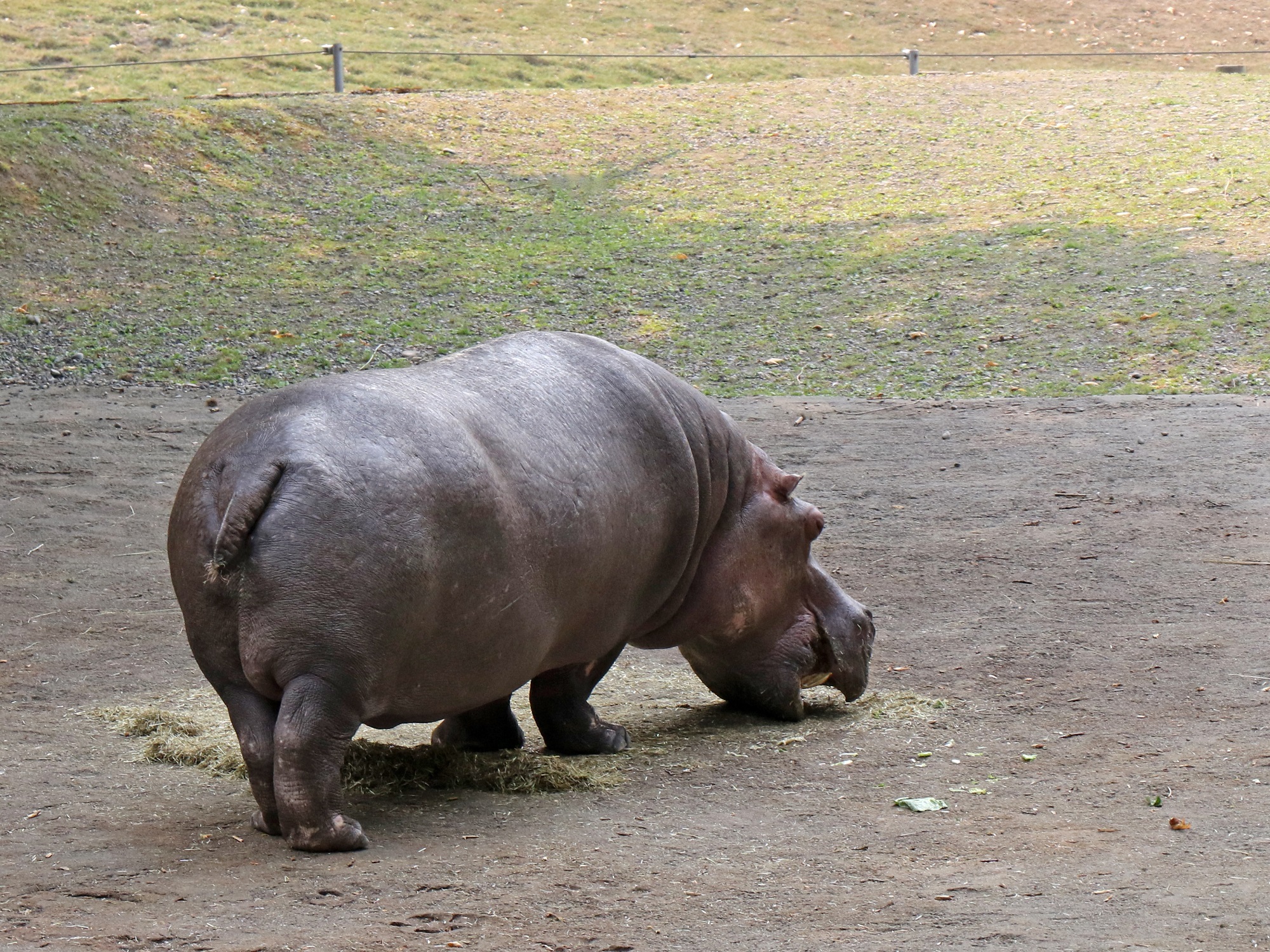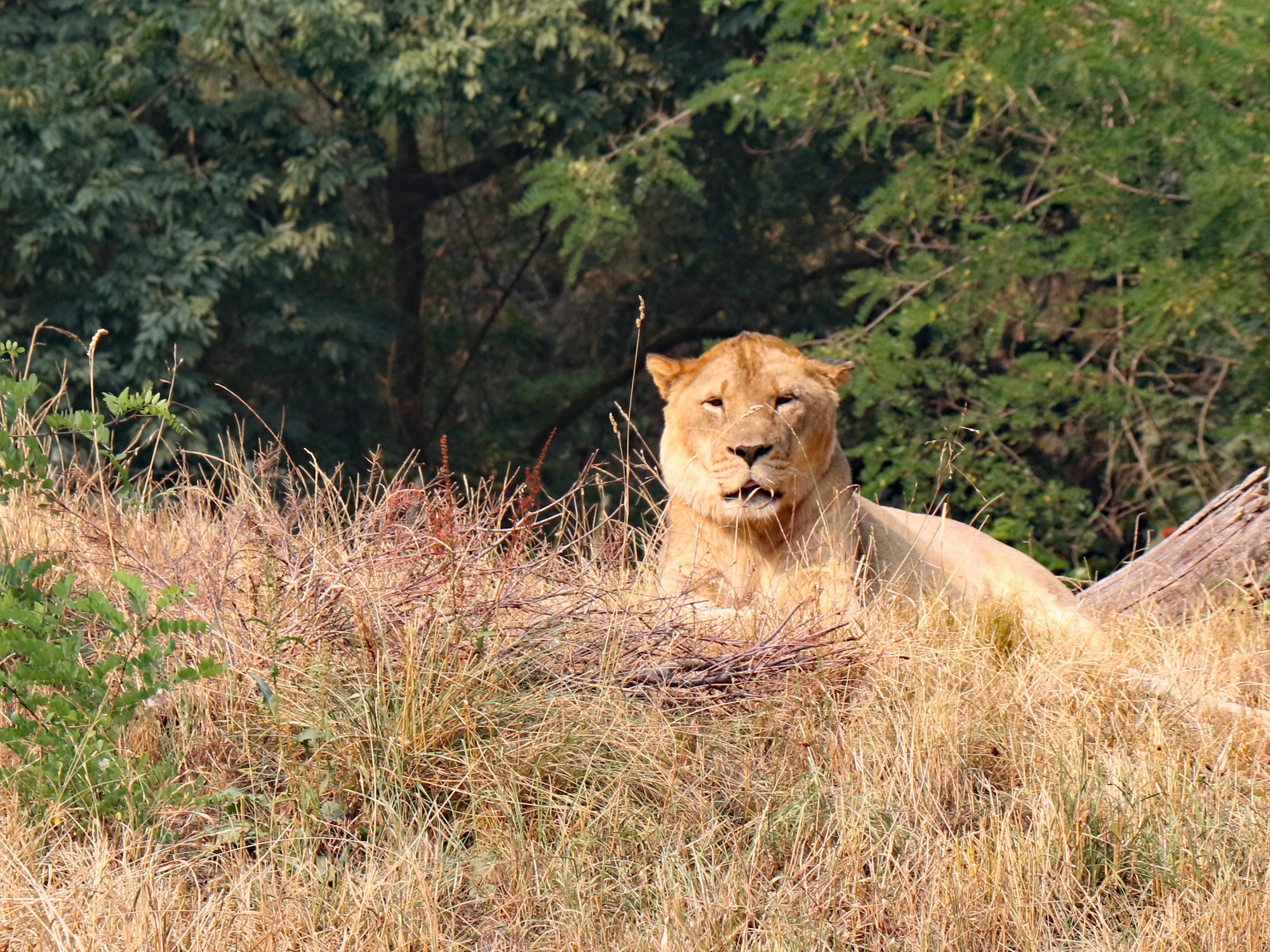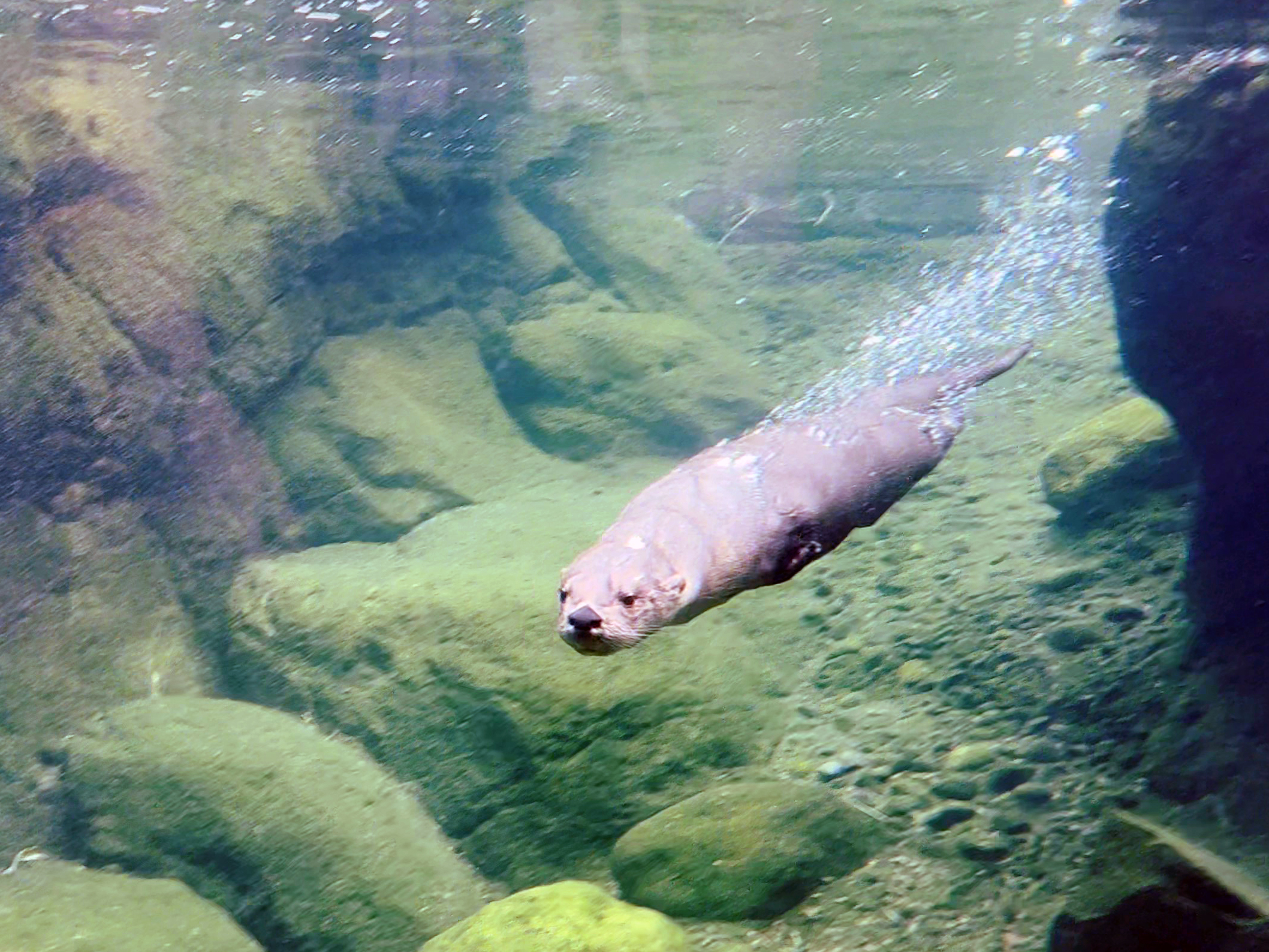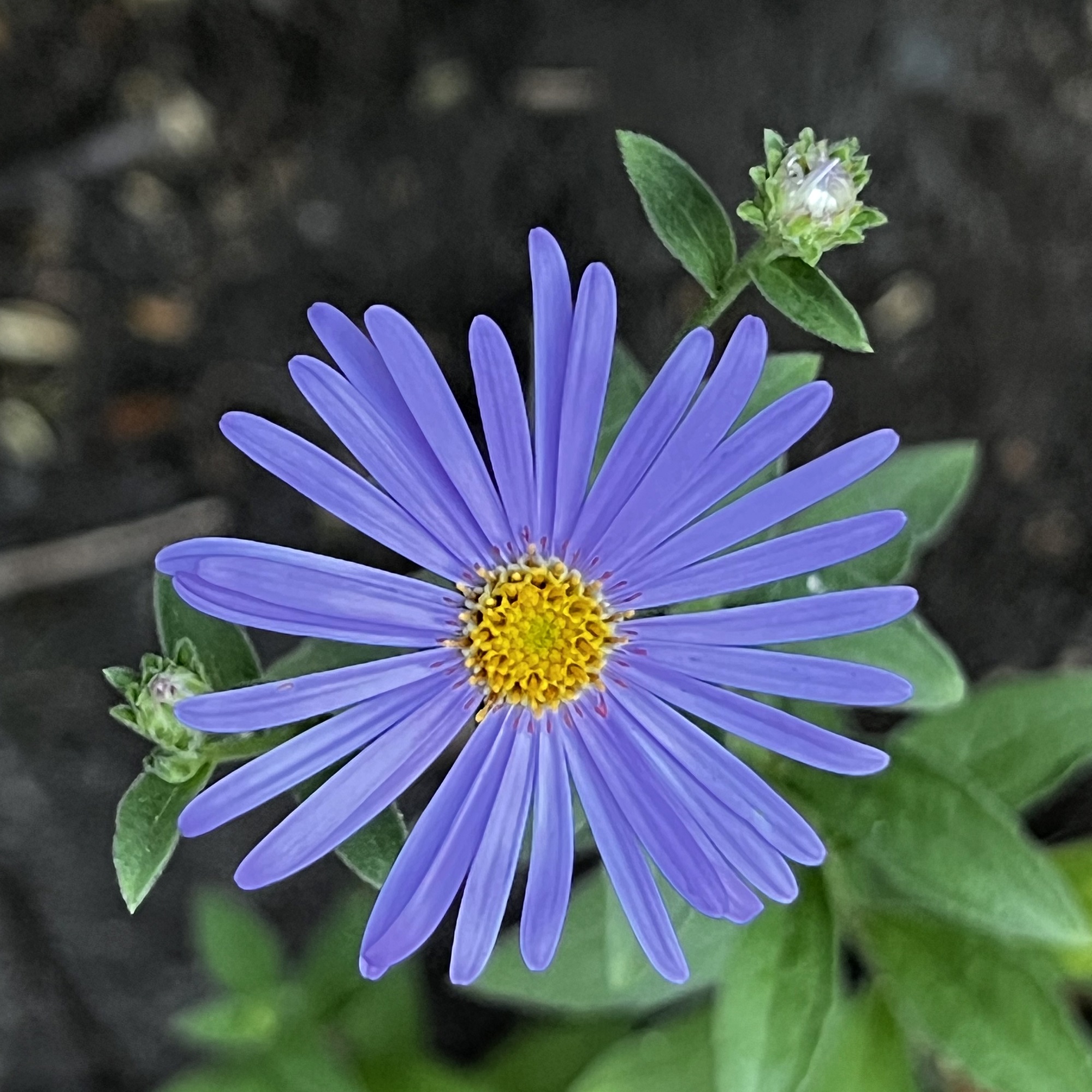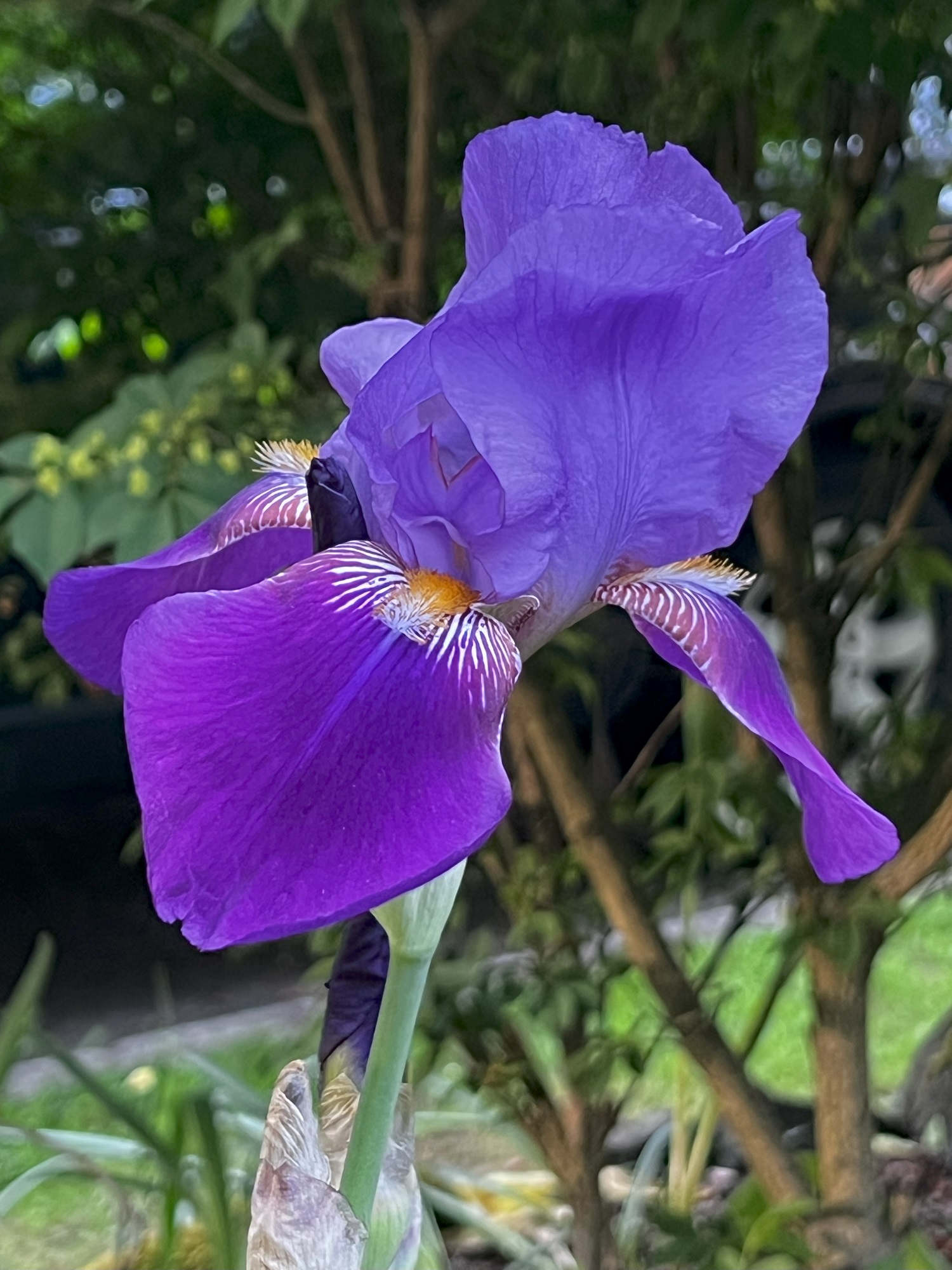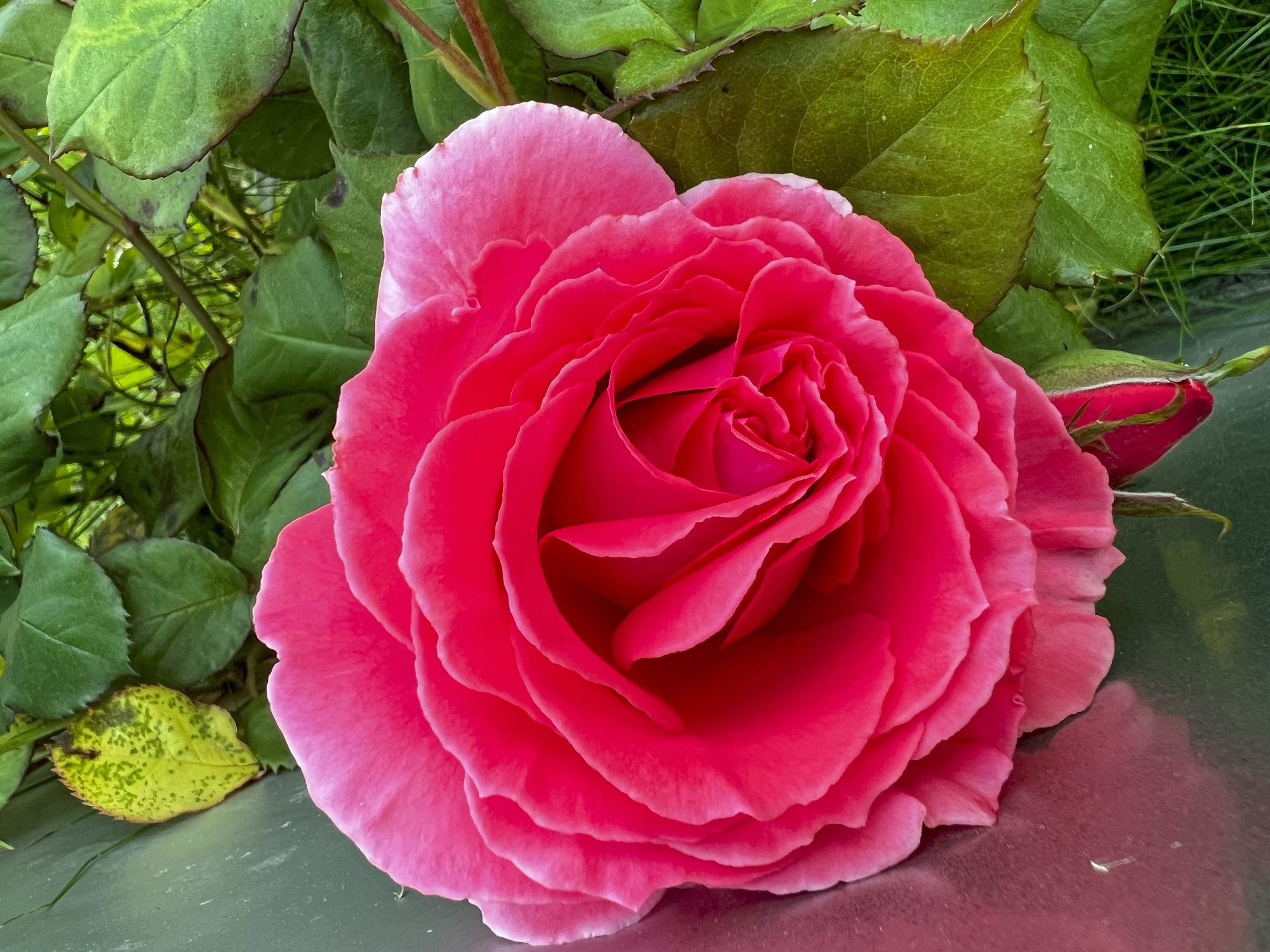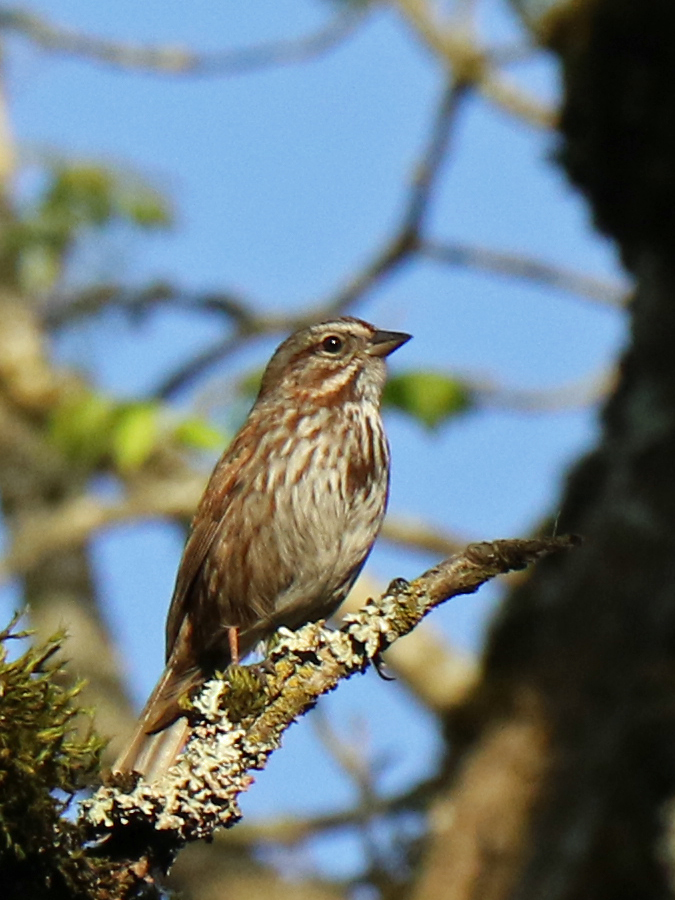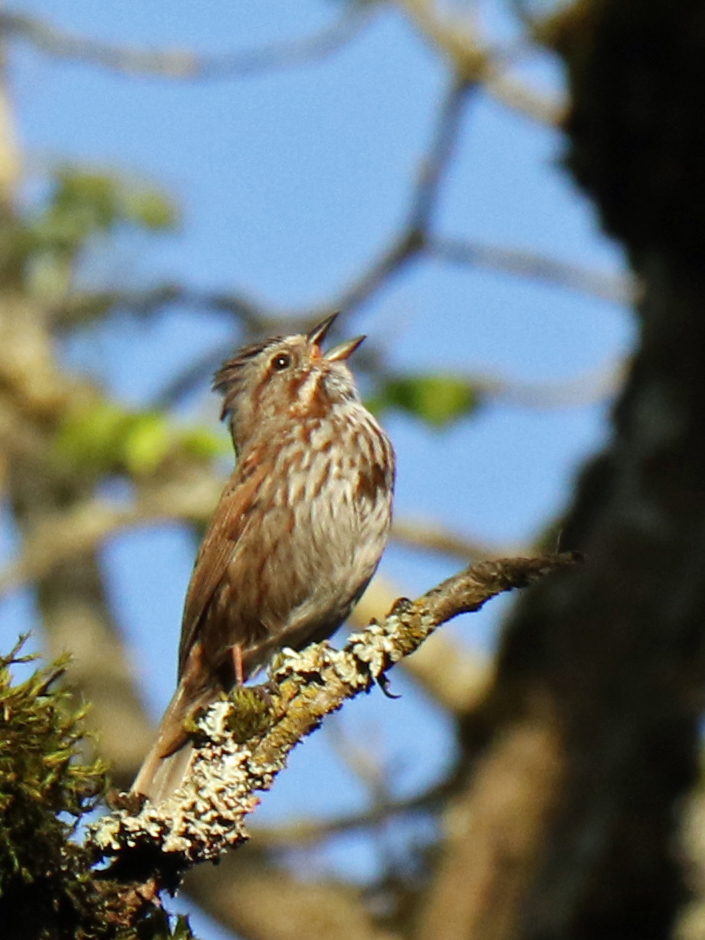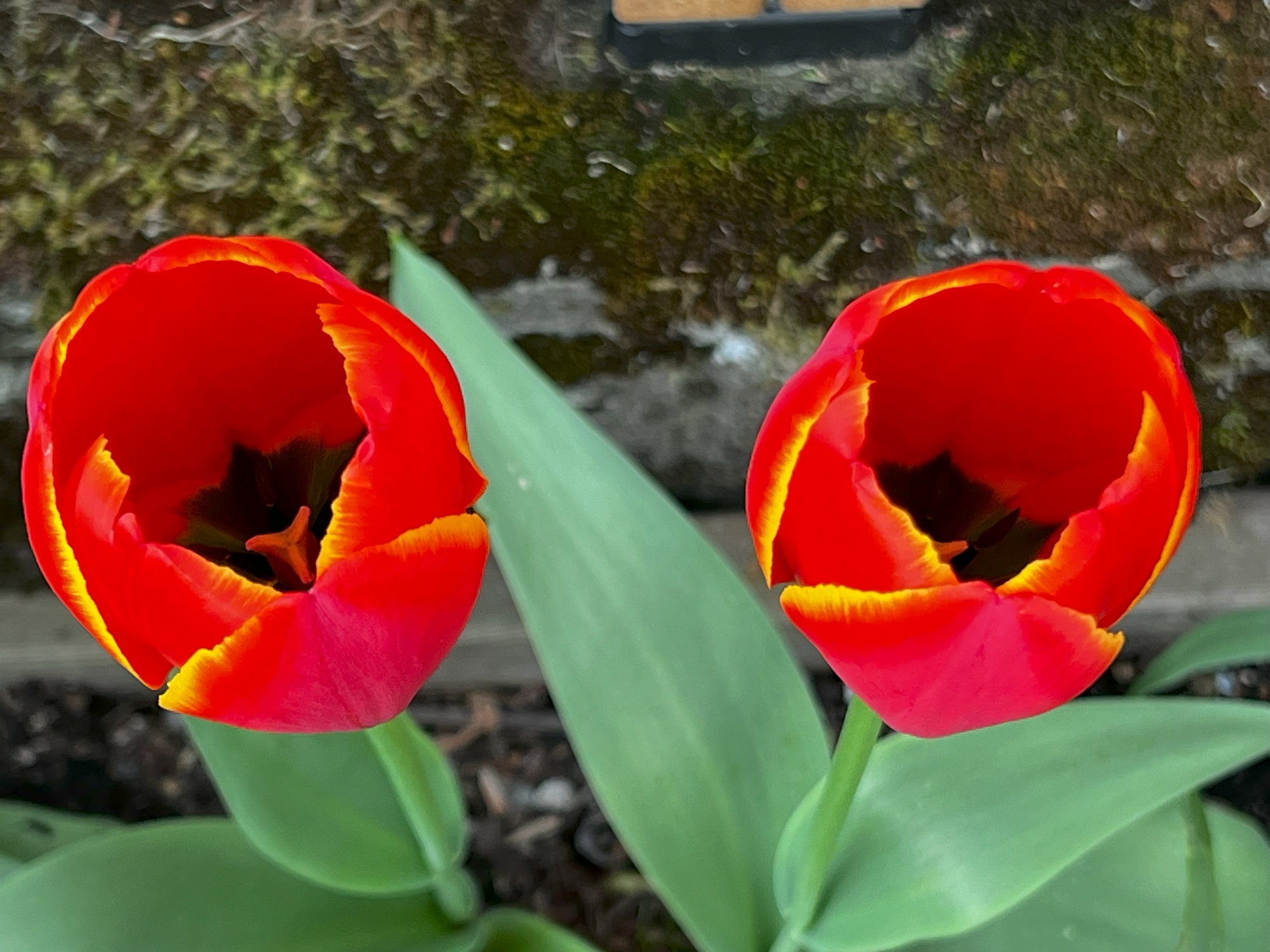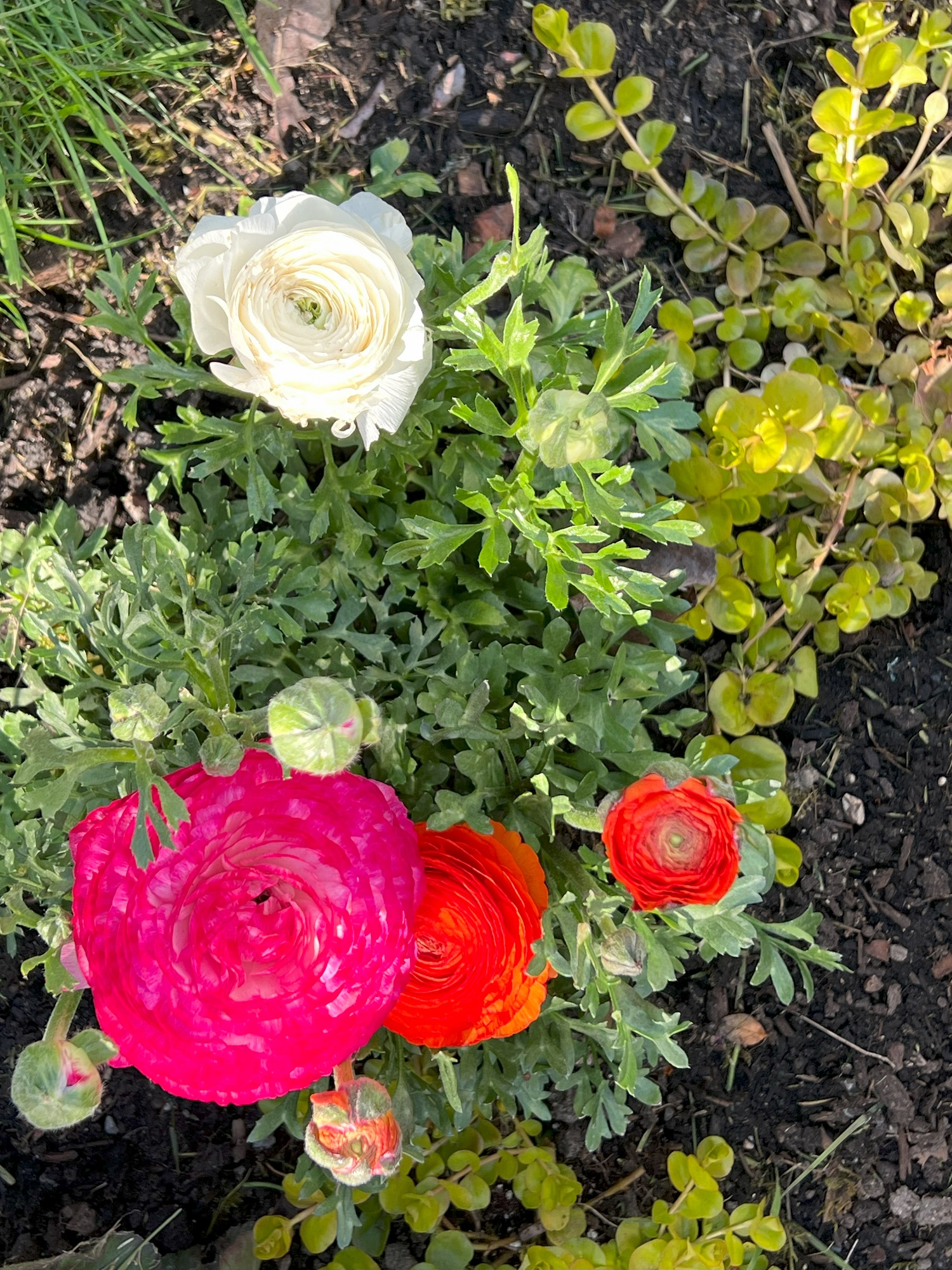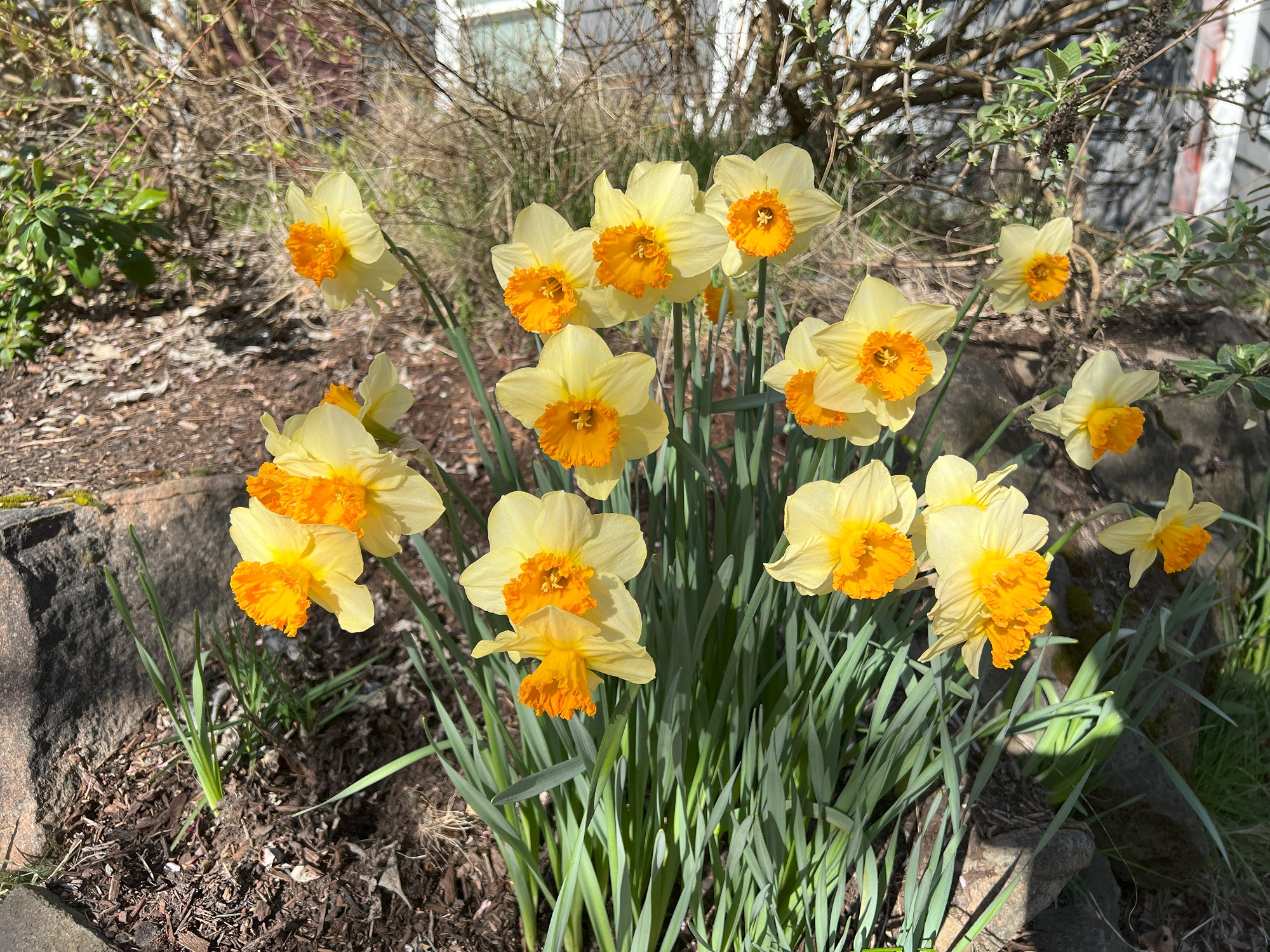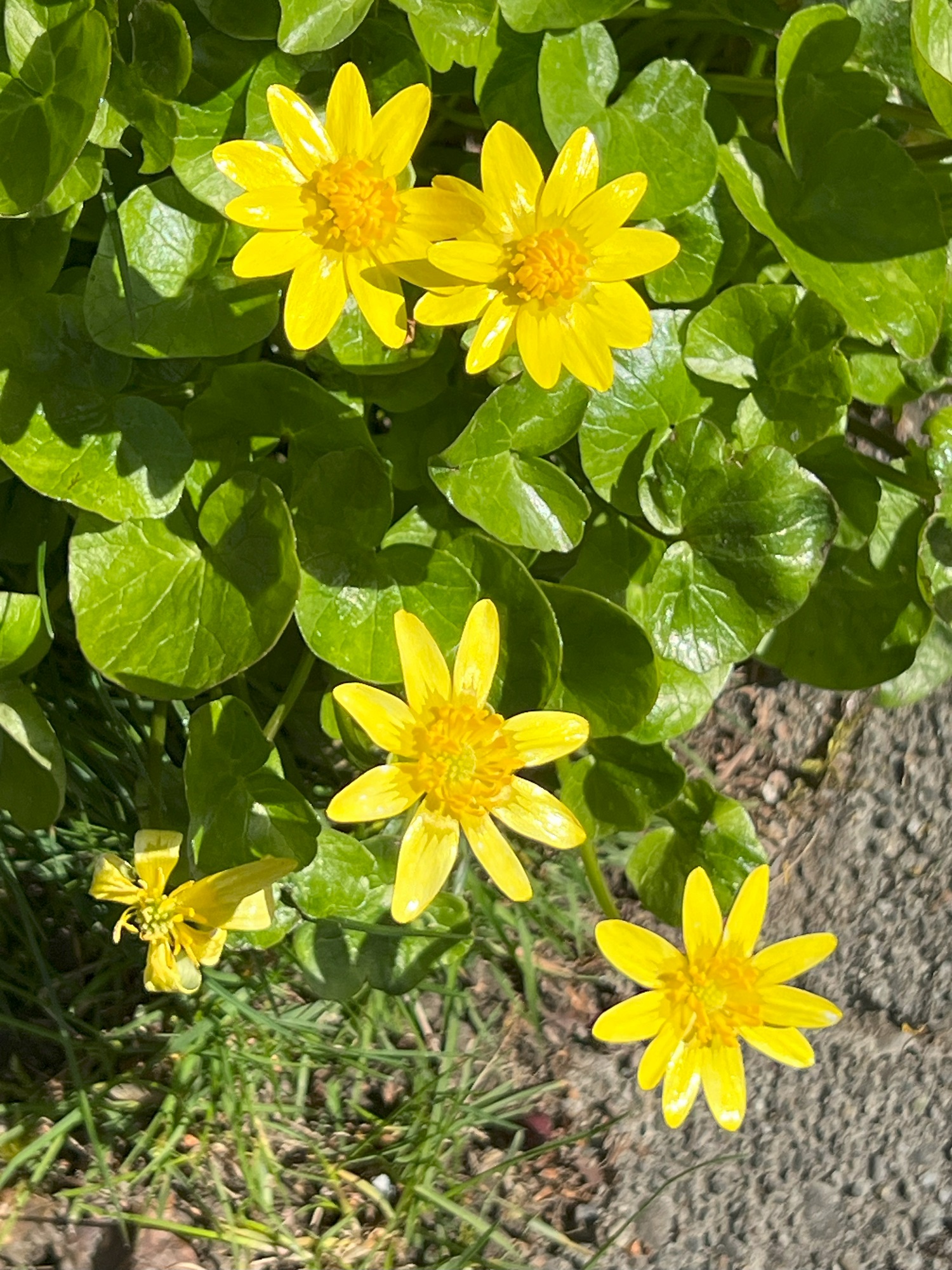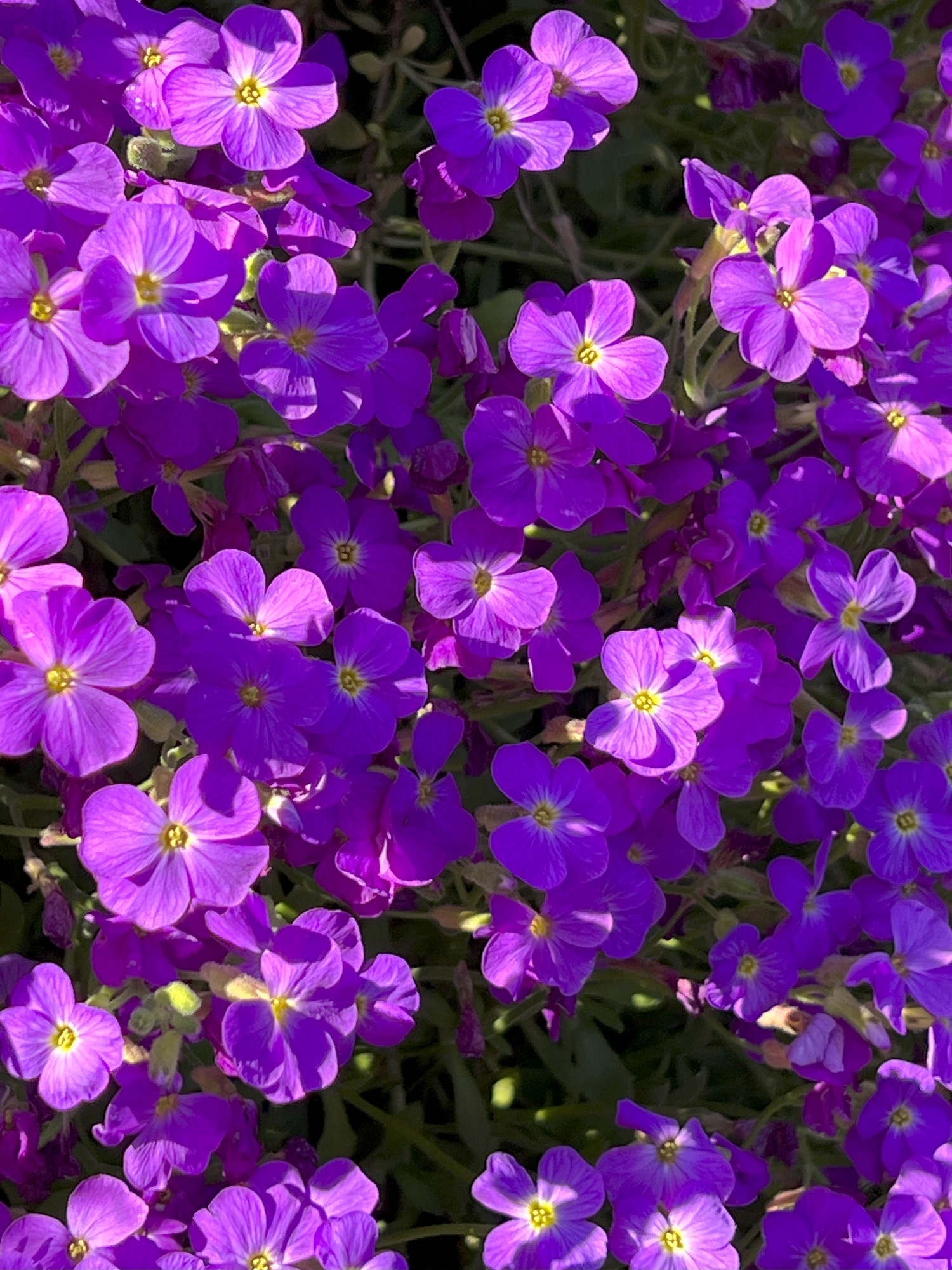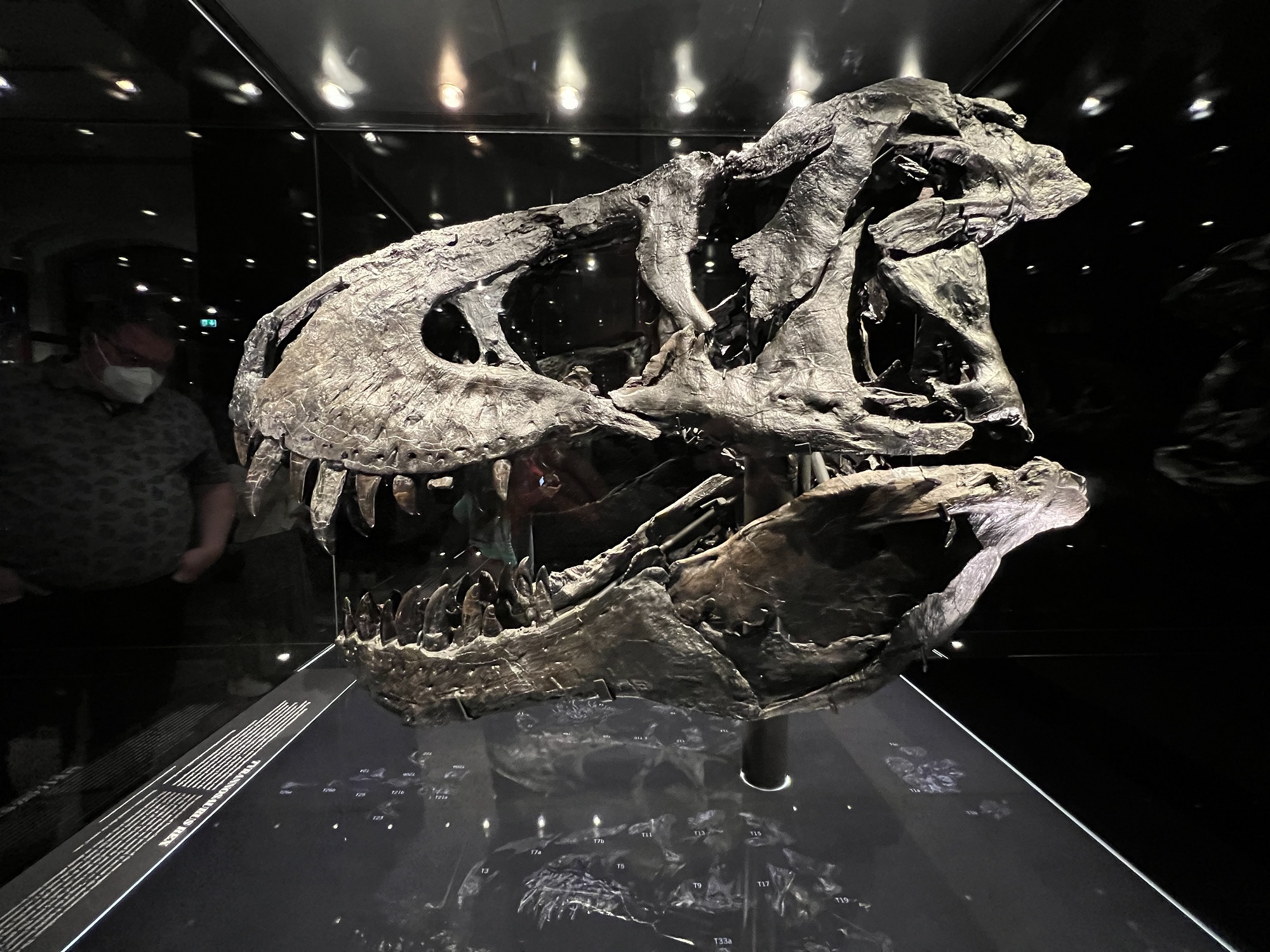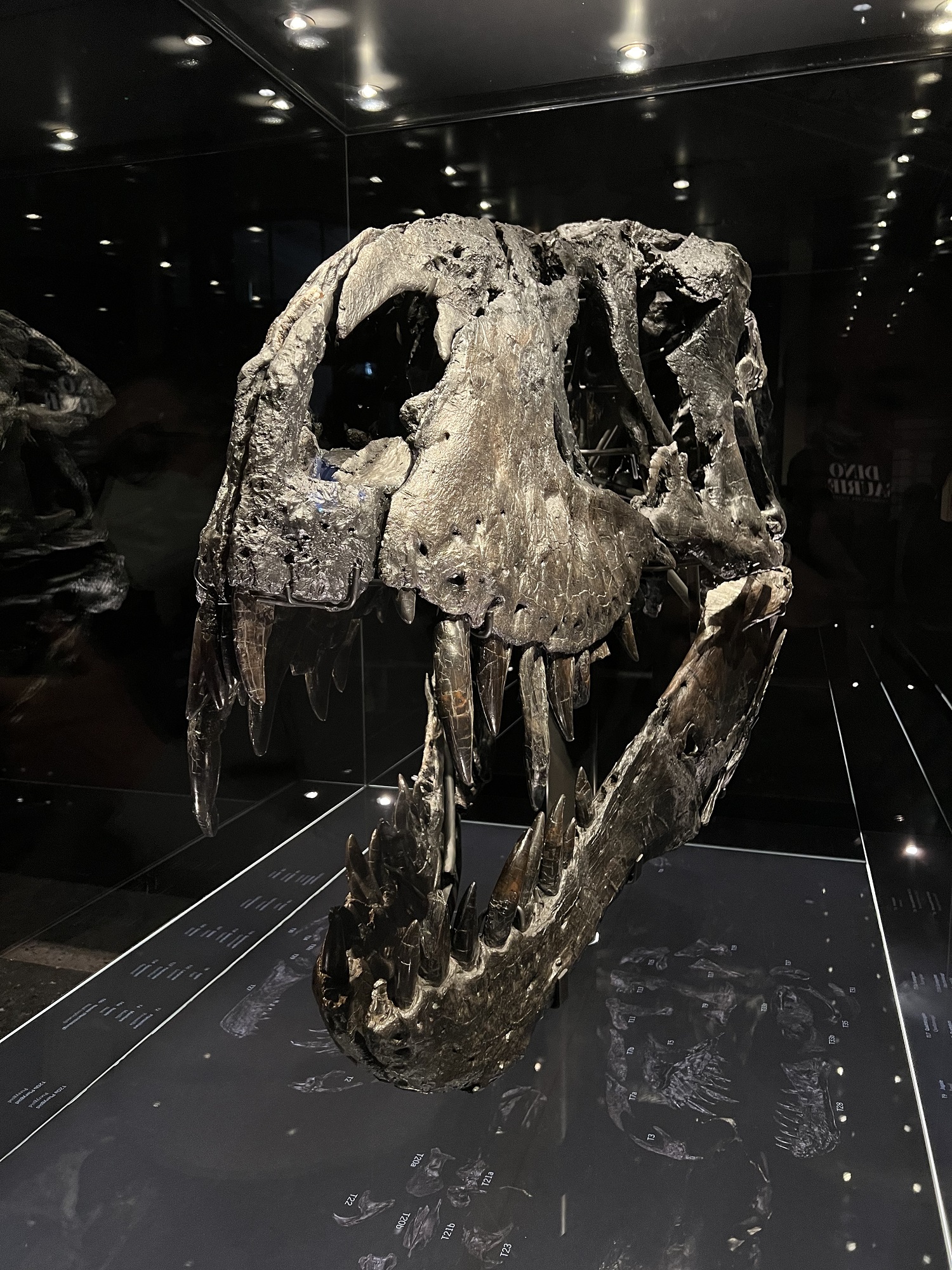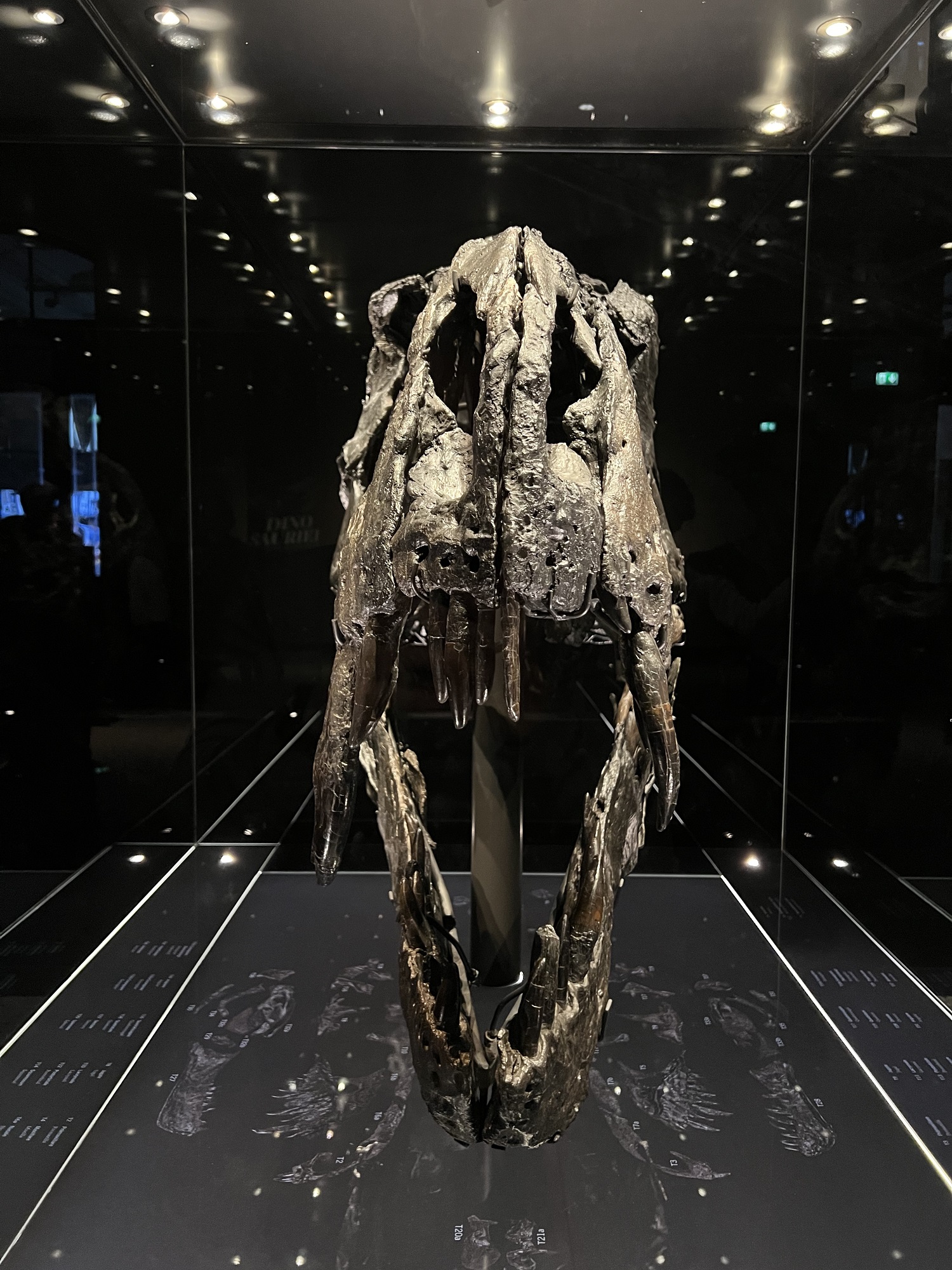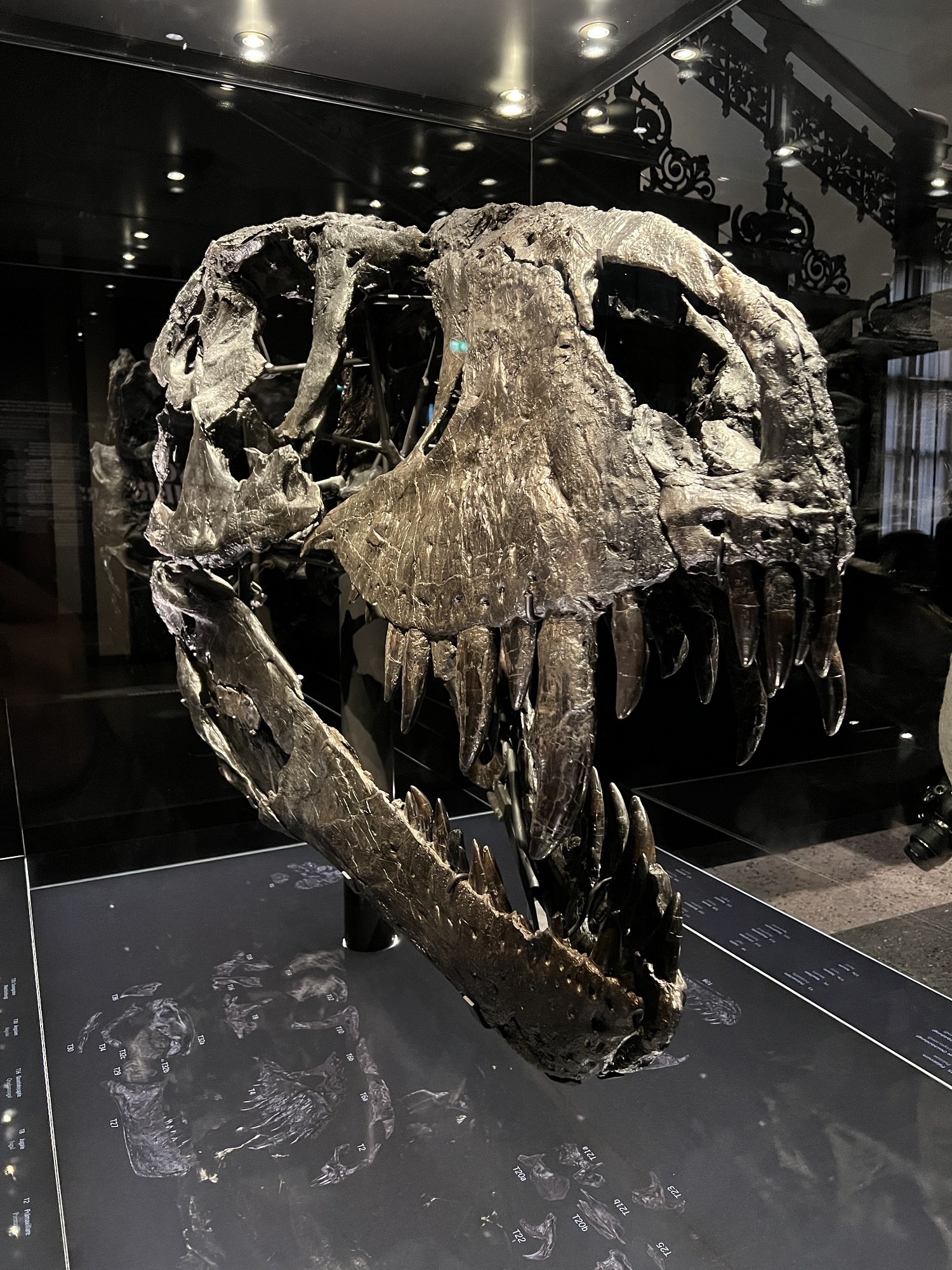Happy Friday.
The cosmos flowers are from 18th Avenue here on Capitol Hill in Seattle.
Thursday/ at Sunrise 🌅
Located in the northeast corner of the park at an elevation of 6,400 ft (1 950 m), Sunrise is Mount Rainier National Park’s highest visitor center.
It is only open from early July to early September.
The butterfly is a mariposa copper (Lycaena mariposa), and on the log is a Clark’s nutcracker (Nucifraga columbiana) and a Townsend’s chipmunk (Tamias townsendii).
Wednesday/ Mowich Lake 🏞
Sunday/ a reflection pool 🪞
Sunday/ at the zoo 🐻
These creatures are all from Seattle’s Woodland Park Zoo.
The zoo opened 124 years ago, in 1899.
Top to bottom: Grizzly bears, Langur, Gray wolf, Canadian lynx, Kookaburra, Asian small-clawed otter, Western Low-land gorilla, Jaguar, Toco toucan, White-naped crane, Reticulated giraffe, Hippopotamus, African lion, River otter.
Wednesday/ Hawaii is burning 🔥
This summer is no exception when it comes to apocalyptic scenes of fires and floods, worsened by the changes in the planet’s climate.
There is very bad news out of Hawaii, as well, now— of destructive firestorms that started yesterday and continued into today.
Thomas Fuller, reporting for the New York Times:
From the air, the town of Lahaina looks incinerated. Charred palm trees are reduced to slender matchsticks protruding into the smoky sky. Homes are ash. Streets are deserted.
The firestorm that tore through the western shores of Hawaii’s Maui island on Tuesday and continued on Wednesday has killed at least six people and forced the evacuation of more than 2,000, the authorities said. It was the deadliest wildfire in the state’s history, according to Clay Trauernicht, a tropical fire specialist at the University of Hawaii at Manoa.
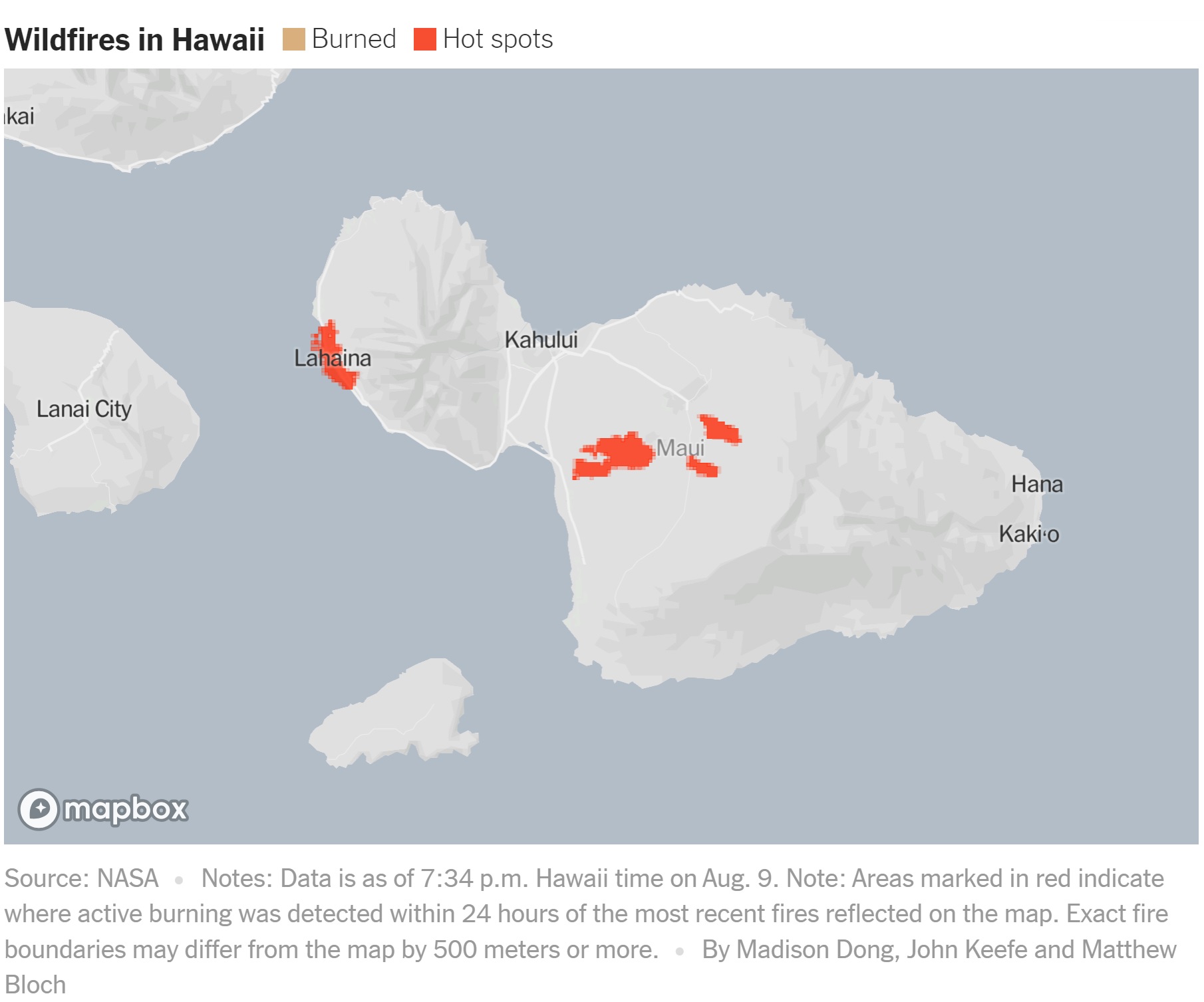
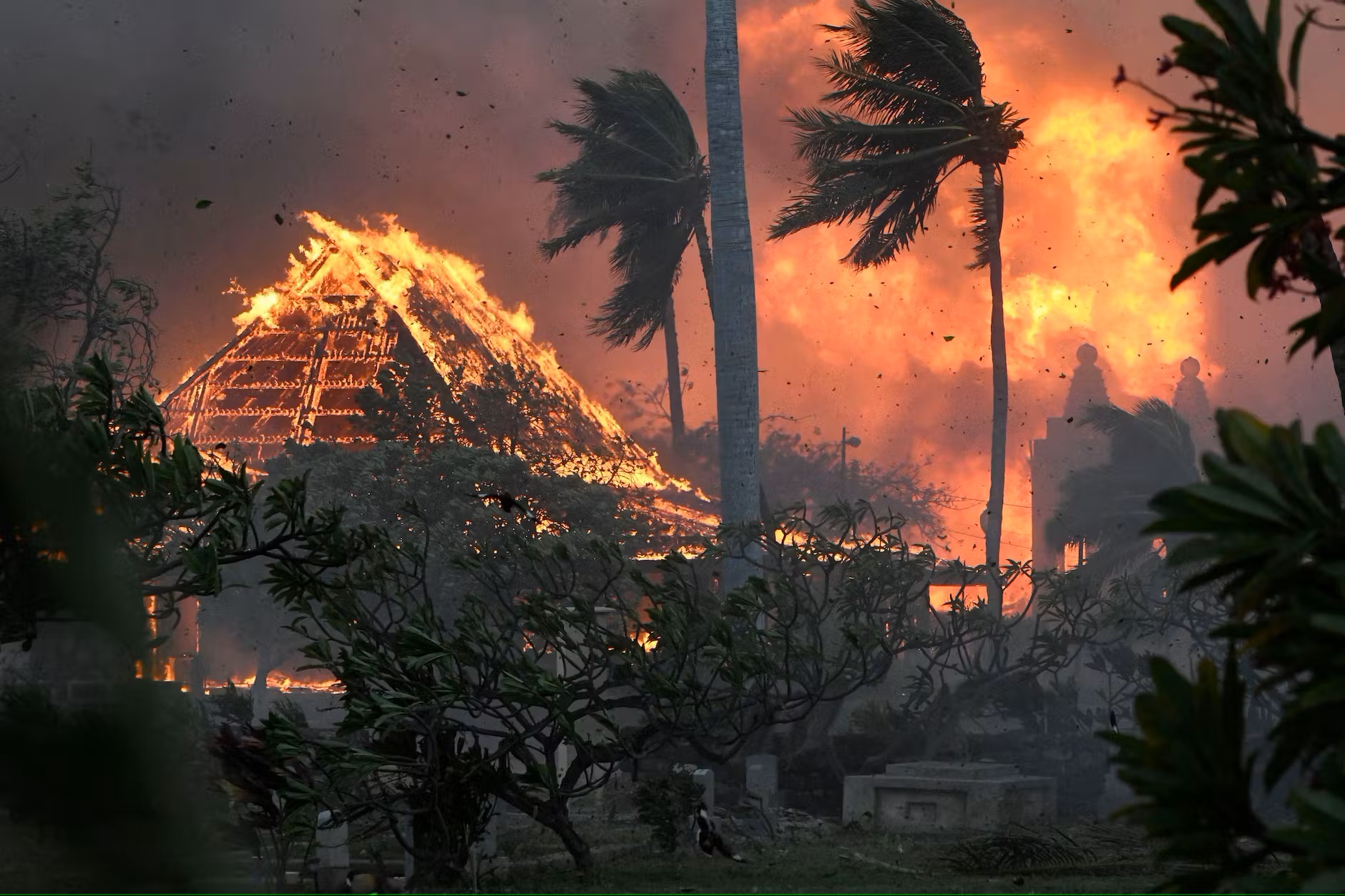
[Photo by Matthew Thayer/The Maui News/AP]
Tuesday/ asters 😊
Wednesday/ haze, then clear 🟠
Widespread haze before 11pm.
Clear 86°F/ 30°C, with a low around 59°F/ 15°C.
Northeast wind 6 to 8 mph.
– Tonight’s weather forecast for Seattle, from the National Weather Service
Do we really need to blow up tons of fireworks while wildfires are raging and the planet is burning up?
(More than 7,000 pounds of fireworks was set off on Lake Union last night for the city’s Fourth of July celebrations.)
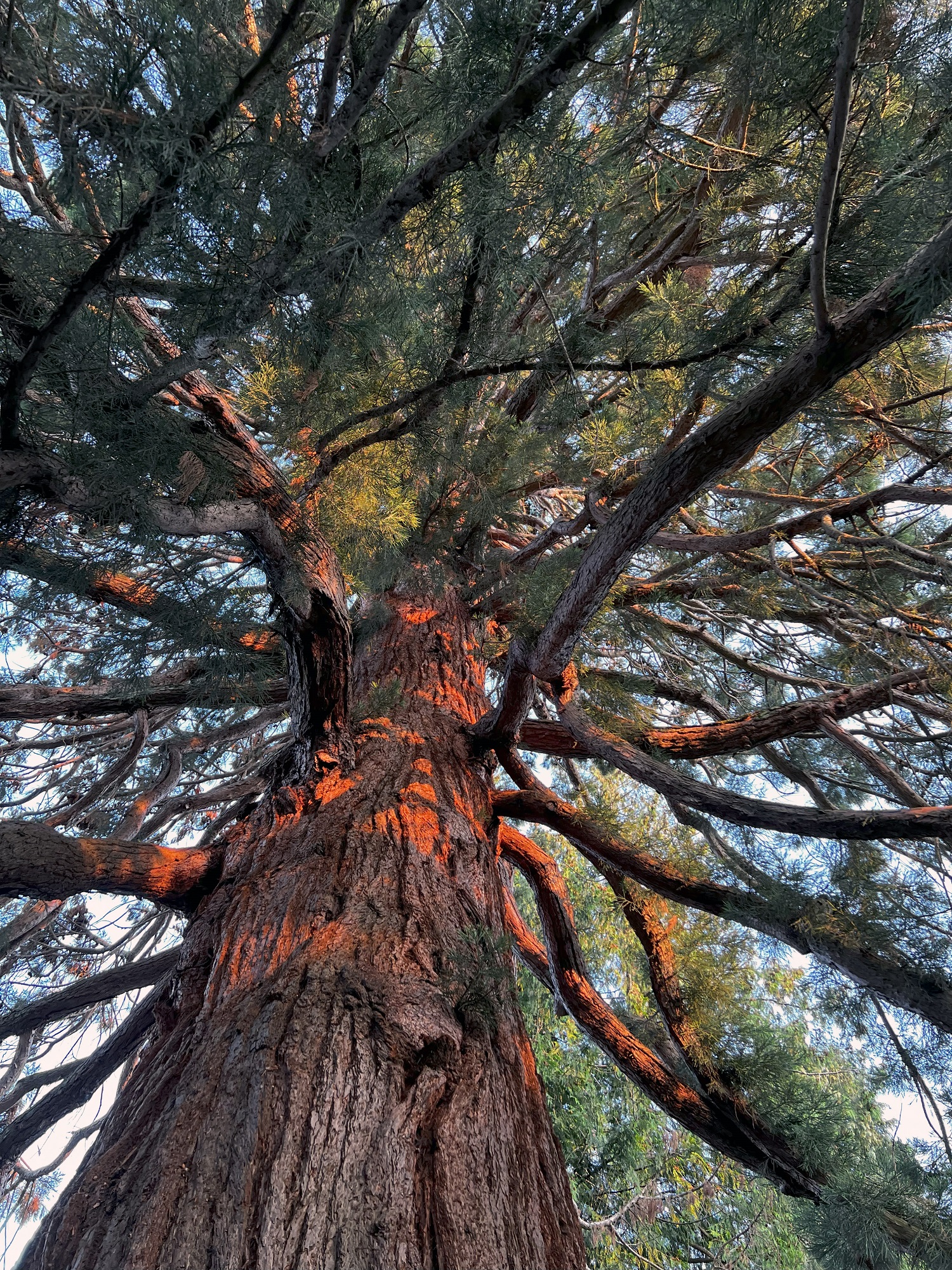
Tuesday/ the colors of summer ☀️
Here’s a stunning lily flower that I found on my neighborhood walk tonight.
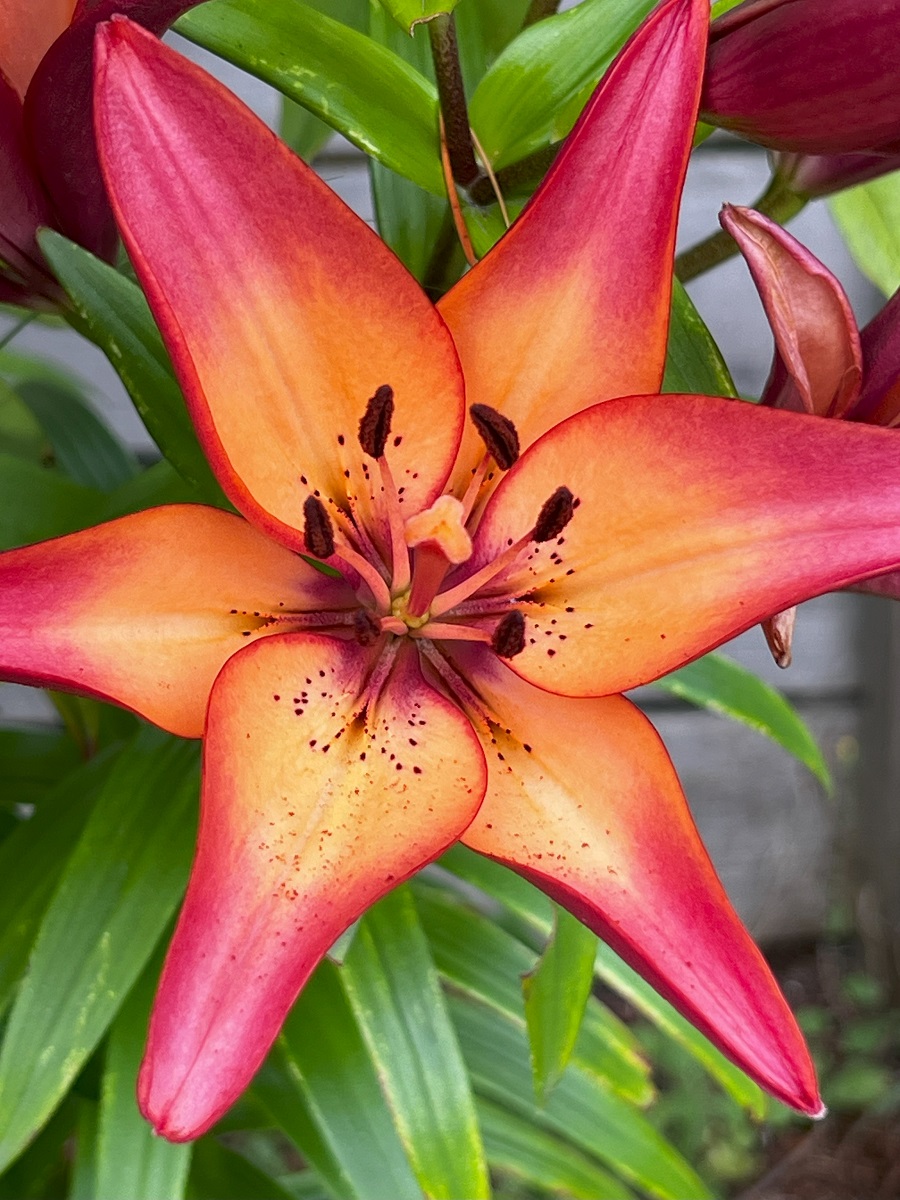
I believe this lily hybrid is called Royal Sunset.
Monday/ mail from New York City 📨
The stamps I had ordered from a seller in New York City, arrived in the mail. The sender put beautiful stamps from yesteryears on the envelope for me.
Might he have picked the 1934 violet stamp with Mt. Rainier on just for me, because I am in Washington State?
I’d like to think so 😉
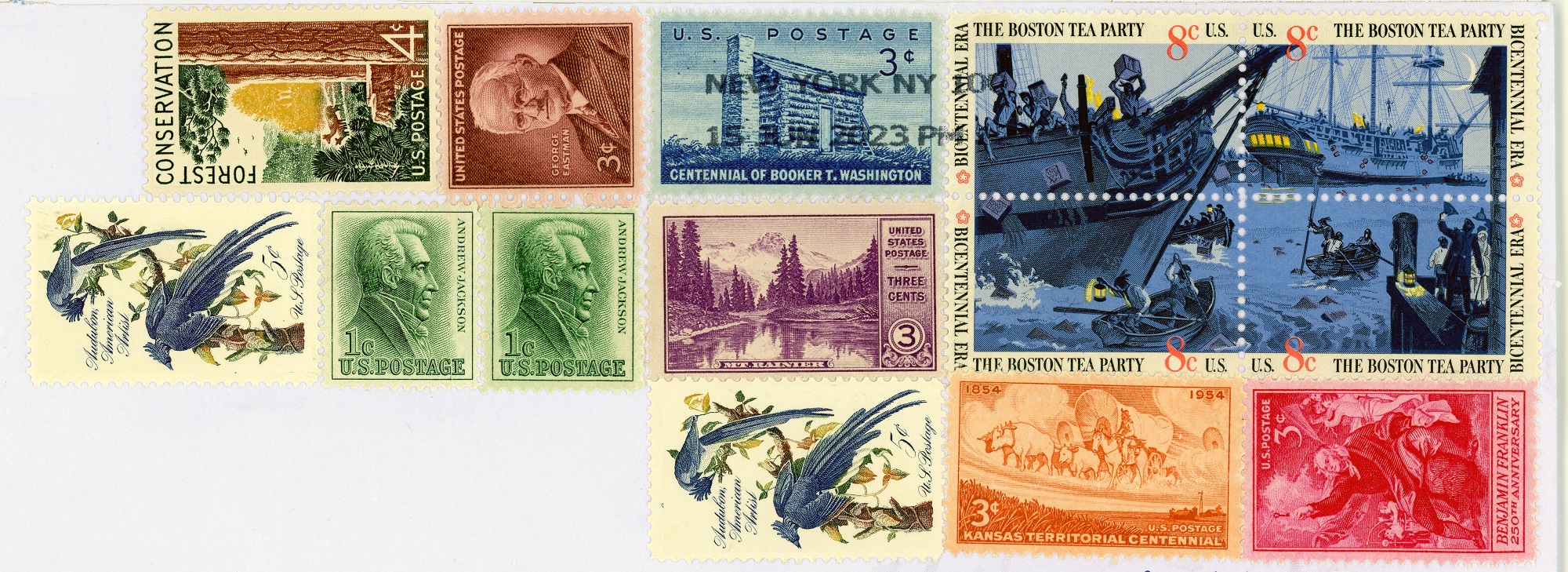
1934 National Parks Issue/ Mt. Rainier (one from a set of 10 stamps)
Unwatermarked, Perf. 11, Flat Plate printing
742 A241 3c deep violet, Aug.3 1934, Mt. Rainier and Mirror Lake (Washington State)
1954 Wheat Field and Pioneer Wagon Train
Unwatermarked, Perf. 11×10½, Rotary press printing, E.E. Plates*
1061 A508 3c brown orange, May 31 1954
*Electric Eye, a machine that had photo-electric cells to properly center the images to reduce waste during the printing and perforation of stamps.
The machines were introduced in 1935 and used into the late 1950s, when USPS found new ways accurate for centering and perforation.
1954 George Eastman (American entrepreneur who founded the Eastman Kodak Company and helped to bring the photographic use of roll film into the mainstream).
Unwatermarked, Perf. 10½x 11, Rotary press printing, E.E. Plates
1062 A509 3c violet brown, Jul.12 1954
1956 Benjamin Franklin (issued to commemorate the 250th anniversary of the birth of Benjamin Franklin).
Unwatermarked, Perf. 11×10½, Rotary press printing, E.E. Plates
1073 A520 3c bright carmine, Jan.17 1956, Franklin Taking Electricity From The Sky (stamp design by Benjamin West)
1956 Booker T. Washington (Centennial of the Birth of Booker T. Washington (1856-1915), black educator, founder and head of Tuskegee Institute in Alabama
Unwmk., Perf. 11×10½, Rotary press printing, E.E. Plates
1074 A521 3c deep blue, Apr.5 1956, Log Cabin (stamp design by Charles R. Chickering)
1958 Forest Conservation (issued to publicize forest conservation and the protection of natural resources, and to honor Theodore Roosevelt, a leading forest conservationist, on the centenary of his birth).
Perf. 11, Giori Press printing, Plates of 200 subjects in four panes of 50 each
1122 A567 4c green, yellow & brown, Oct. 27 1958
1962-66 Regular Series/ Andrew Jackson
Unwmk., Perf. 11×10½, Rotary Press printing, Plates of 400 subjects in four panes of 100 each
1209 A646 1c green, Mar.22 1963, Andrew Jackson (7th U.S. President), design by William K. Schrage
1963 John James Audubon
Issued to honor John James Audubon (1785-1851), ornithologist and artist
Unwmk., Perf. 11, Giori Press printing, Plates of 200 subjects in four panes of 50 each
1241 A673 5c dark blue & multi-colored, Dec.7 1963, art titled “Columbia Jays” by Audubon (birds pictured are actually Collie’s magpie jays)
1973 Boston Tea Party (bicentennial of Boston Tea Party, designed by William A. Smith)
Perf. 11, Lithographed, Engraved printing, Plates of 200 subjects in four panes of 50 each
1480 A894 8c black & multi-colored, Jul.4 1973, British Merchantman
1481 A895 8c black & multi-colored, Jul.4 1973, British Three-master
1482 A896 8c black & multi-colored, Jul.4 1973, Boats and Ship’s Hull
1483 A897 8c black & multi-colored, Jul.4 1973, Boats and Dock
[Information from Scott Specialized Catalogue of United States Stamps, 1989]
Wednesday/ a New York city sunset 🌇
From the Washington Post, reported by Ian Livingston:
Streaks of golden light bathed the urban canyons of the Big Apple on Tuesday evening as it was treated to a spectacle dubbed ‘Manhattanhenge’, when the setting sun aligns perfectly with the middle of the western-facing streets.
The warm evening glow of sunlight was made even more intense because of smoke wafting into the region from wildfires in Nova Scotia.
Along certain thoroughfares of New York City — including 14th, 23rd, 34th, 42nd and 57th streets — unobstructed views toward the horizon made the scenes especially magnificent.
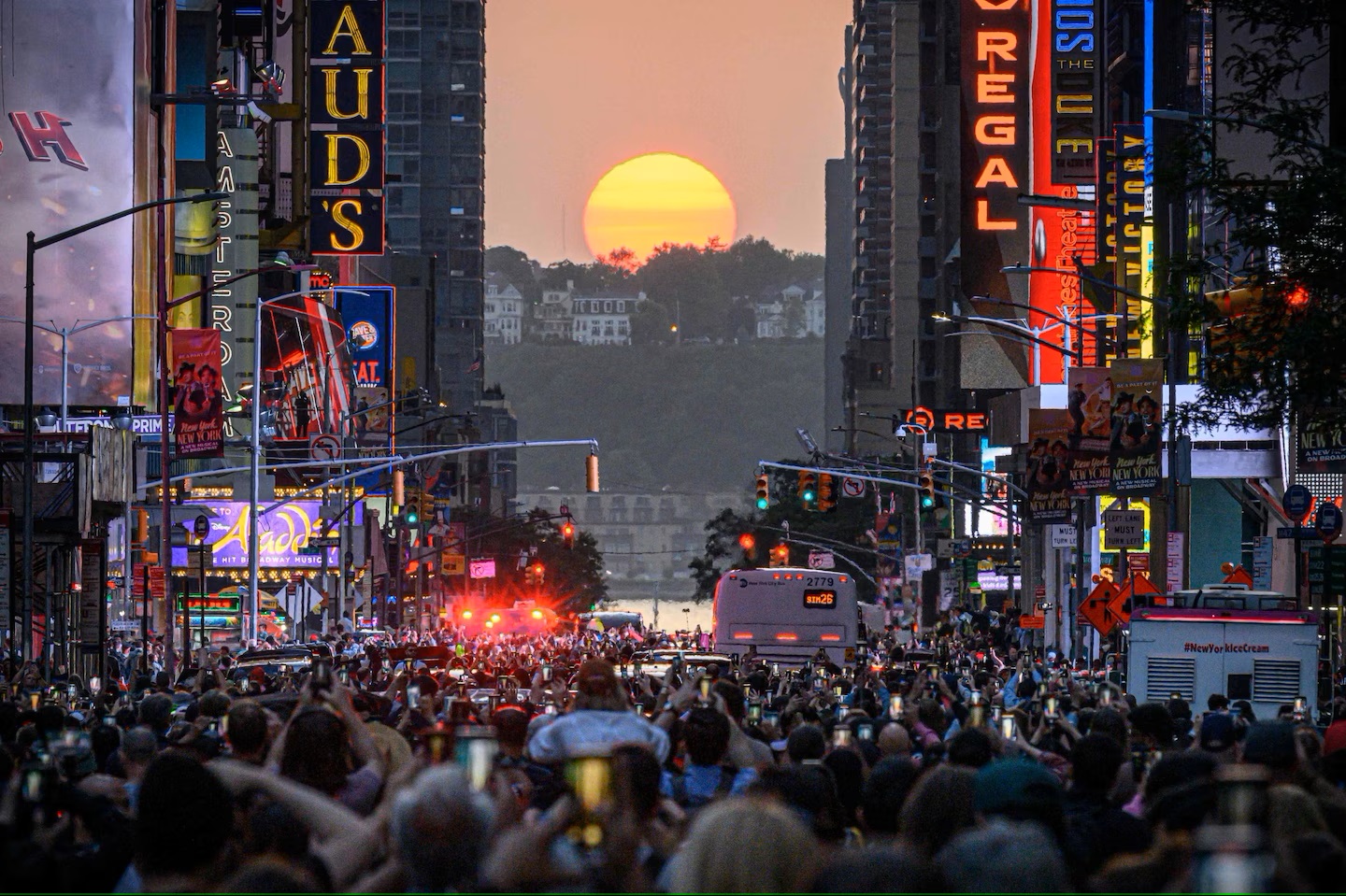
[Photo by Ed Jones/AFP/Getty Images]
Saturday/ named after a goddess 🌈
Happy Mother’s Day
Friday 🐦
Thursday/ hello, little face 😘
I found this pansy flower in the Thomas Street Gardens today.
In South Africa they are called gesiggies in Afrikaans (‘little faces’).
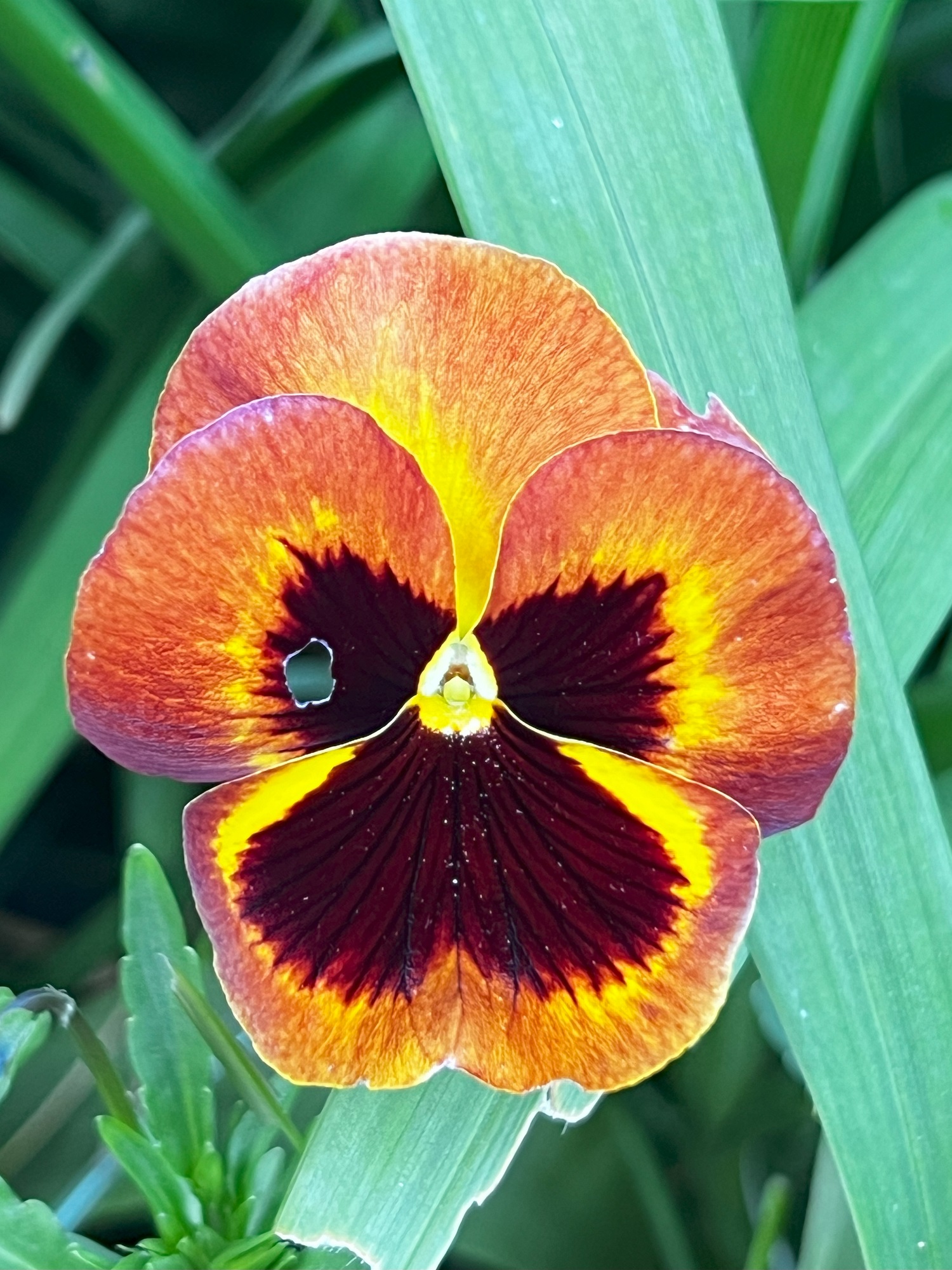
[Source: Wikipedia]
Monday/ it’s a jungle out there 🐛
My lawn is the shaggiest it has been— maybe ever (gasp)— since I have moved into my house.
Our street block’s lawn services guy was off to a late start this spring, and he was scheduled to swing by last Friday, but it rained all day on Friday. He then left word with my neighbor that he would come by today, but it turned out his mower was in need of a quick repair and that he hopes to come out on Tuesday.
I think it’s time for me to dust off the electric mower in my garage and get out there tomorrow.
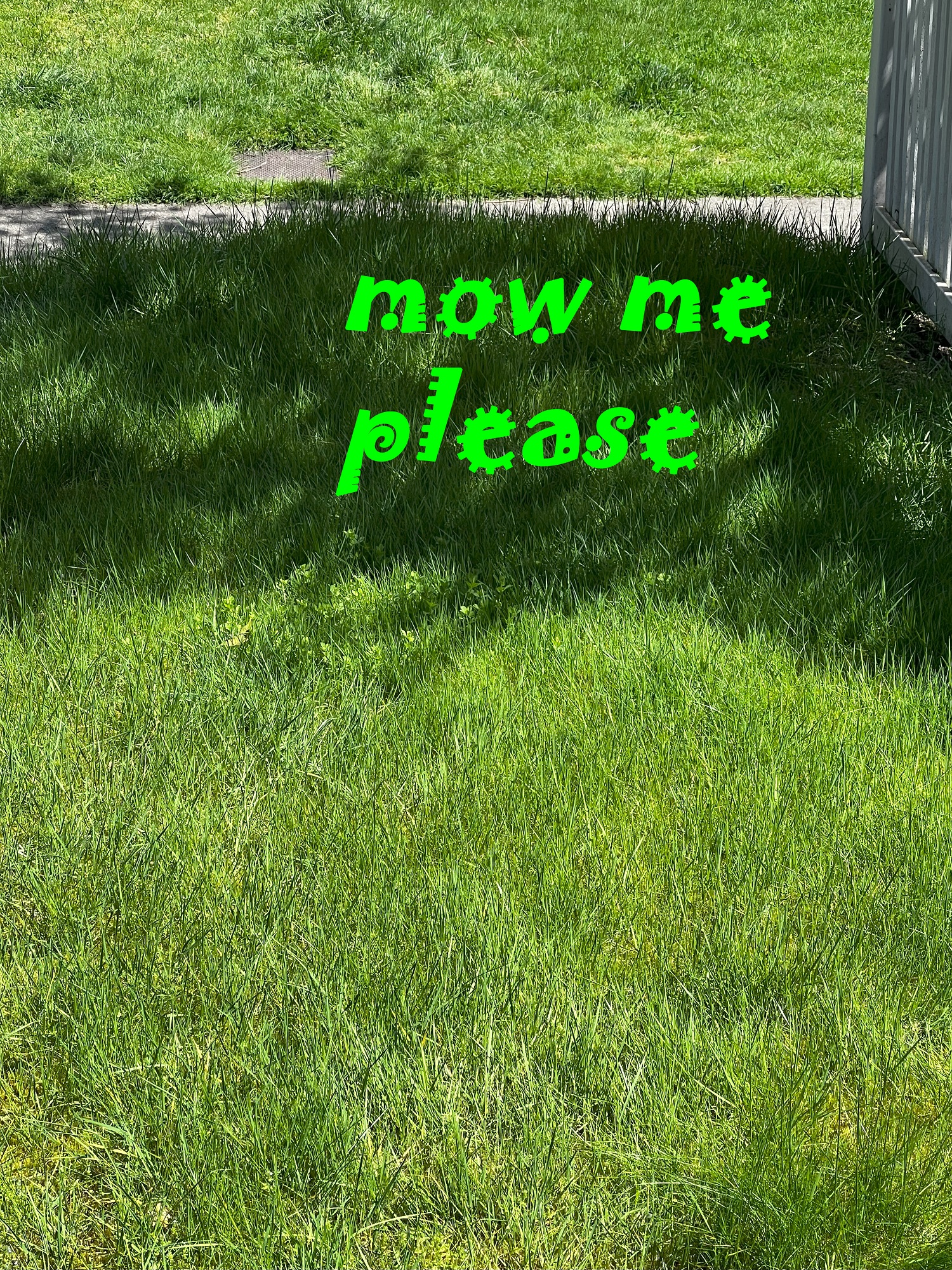
Wednesday/ red, very red— scarlet 🧨
Tuesday/ a poem for a dinosaur 🦕
I found a poem in one of my books that came yesterday— one that is apt for the dinosaur from German toymaker Scheich that I had brought home in my suitcase.
Fossiel
Versteende geheime skuil
in jou primordiale hart.
Hier waar die jakkals nou huil
het oerdier vir oermens getart.
Fossil
Petrified secrets hide away
in your primordial heart.
Here where the jackal howls today,
primeval beast gave caveman a start.
Original Afrikaans poem by Isaac David du Plessis, published 1965.
The rough translation into English is my own.
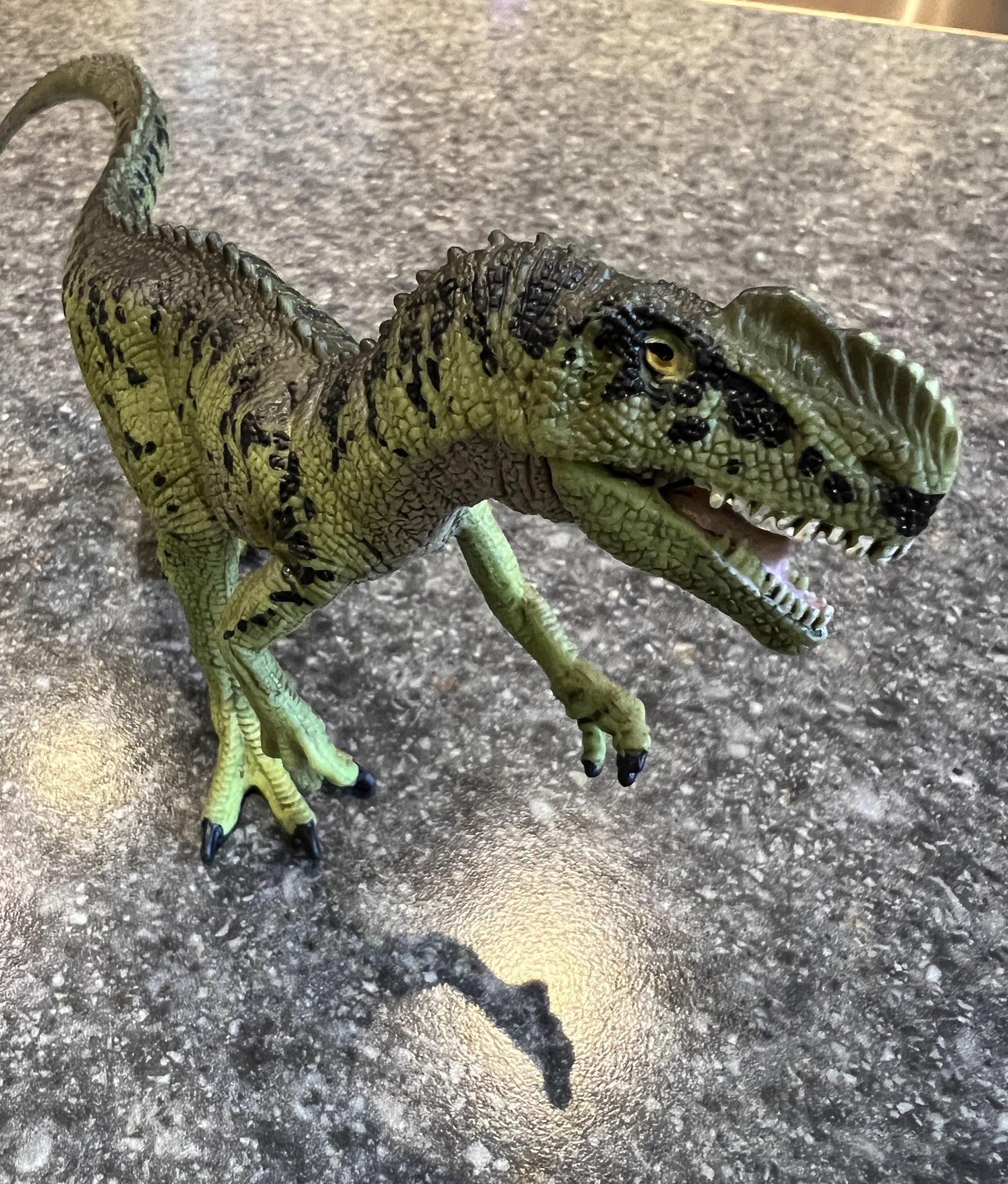
It was named for the single crest on top of its skull. They lived about 165 million years ago. Weight about 1,000 pounds (425 kg) and length about 18 ft (5 m).
Friday/ more spring flowers 🌹
Sunday/ what sharp teeth you have 😱
The Tristan Otto* T-Rex fossil is on loan to the Museum für Naturkunde (Museum of Natural History) in Berlin for research and presentation over the next few years.
It is one of a handful of original Tyrannosaurus rex skeletons in Europe, and is one of the best preserved T. rex specimens in the world.
The deep black skeleton from the Upper Cretaceous period (100 million to 66 million years ago) was found only in 2010— in the Hell Creek Formation in Montana, USA.
*The names of the sons of the two private owners of the fossil.
